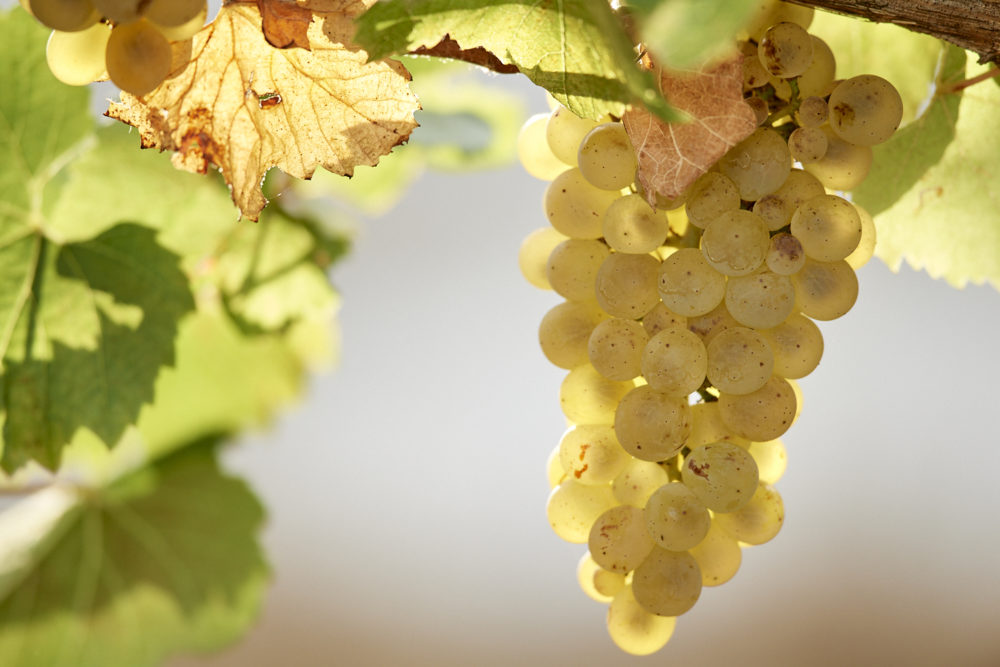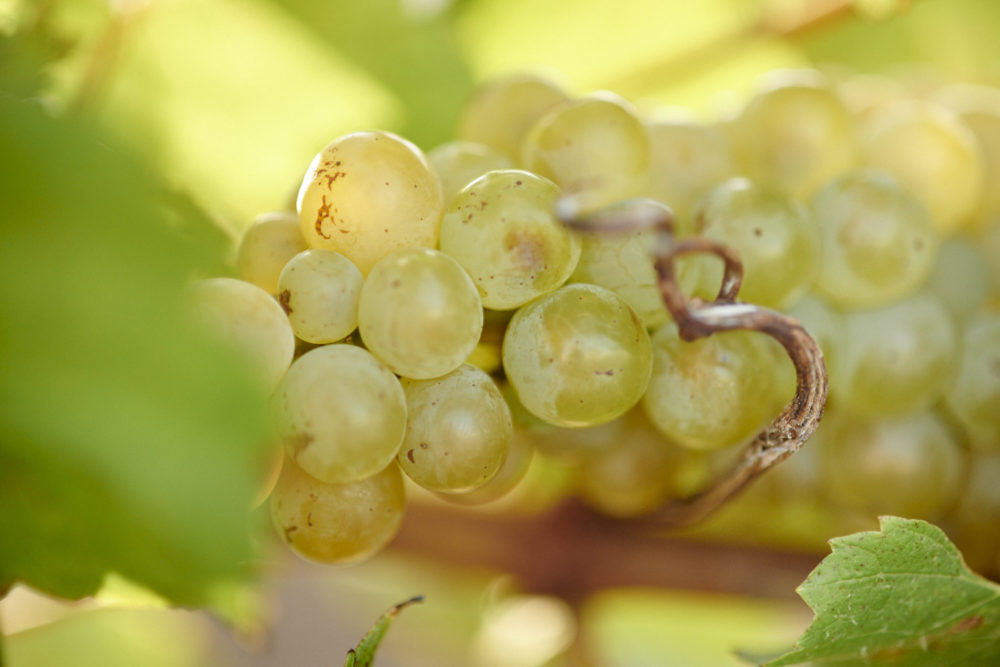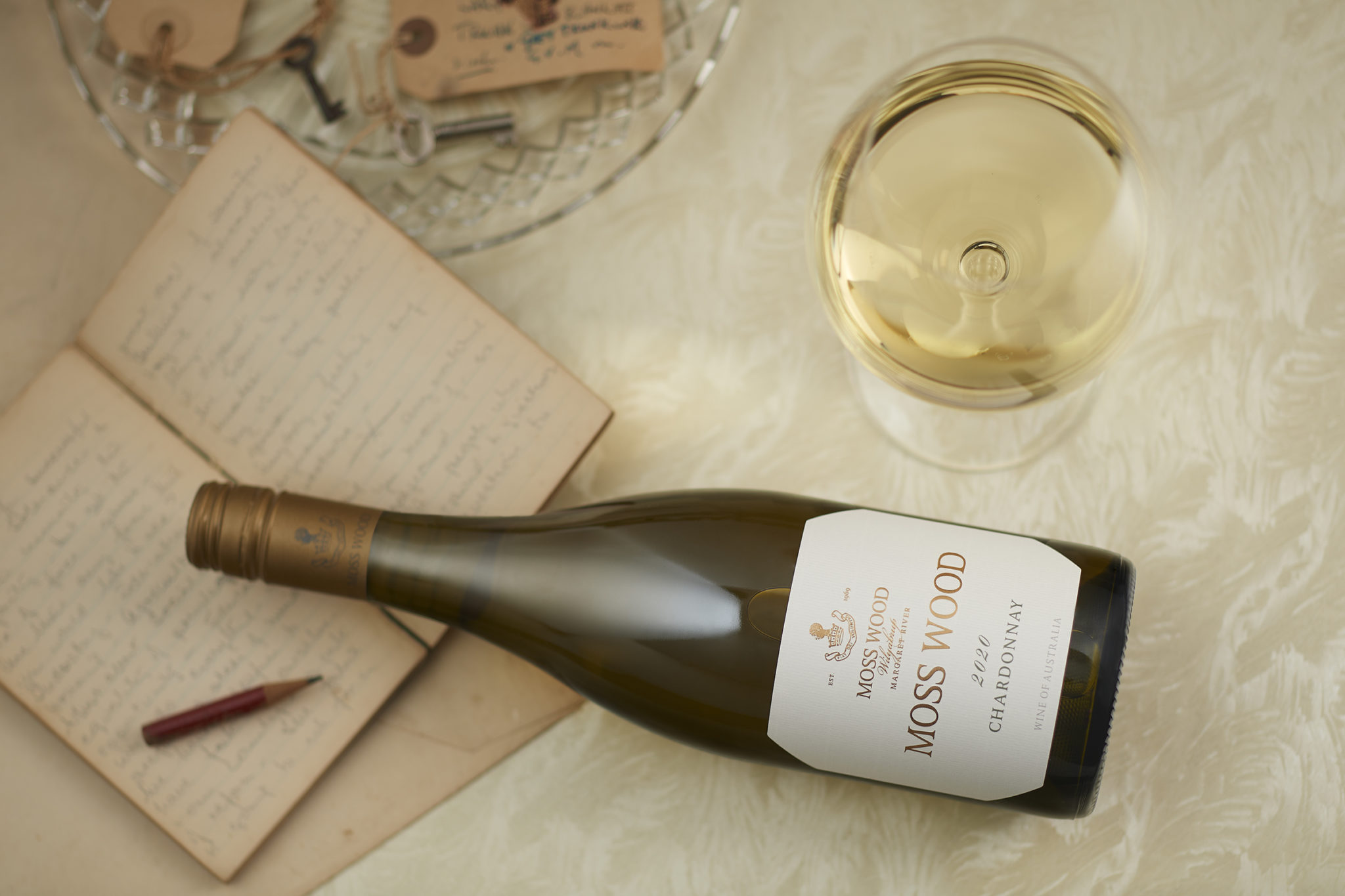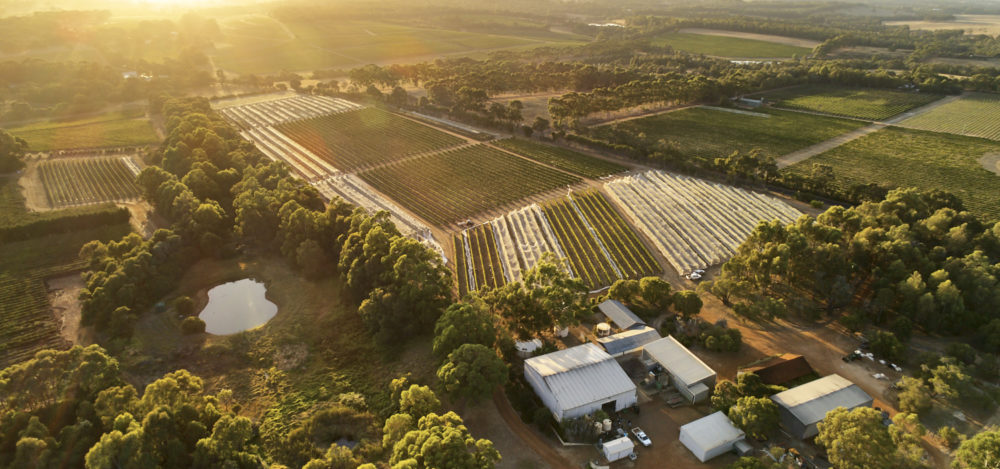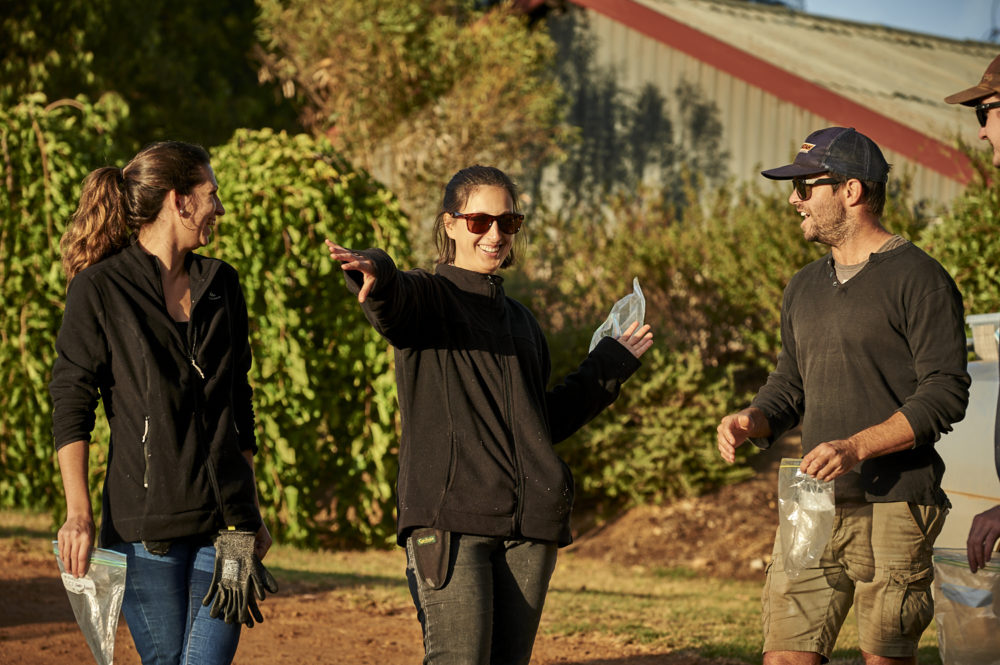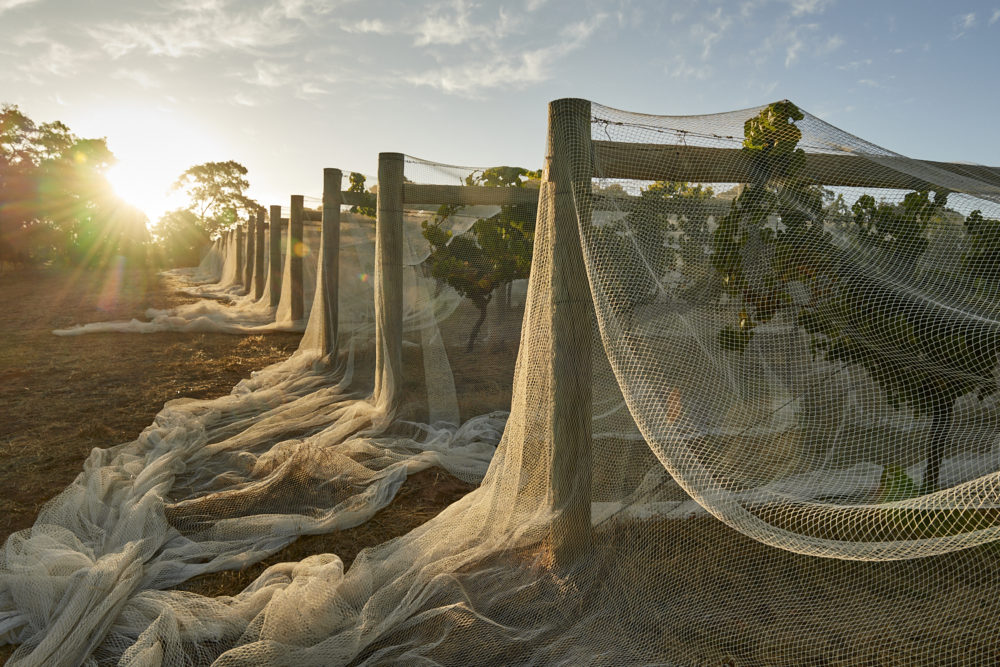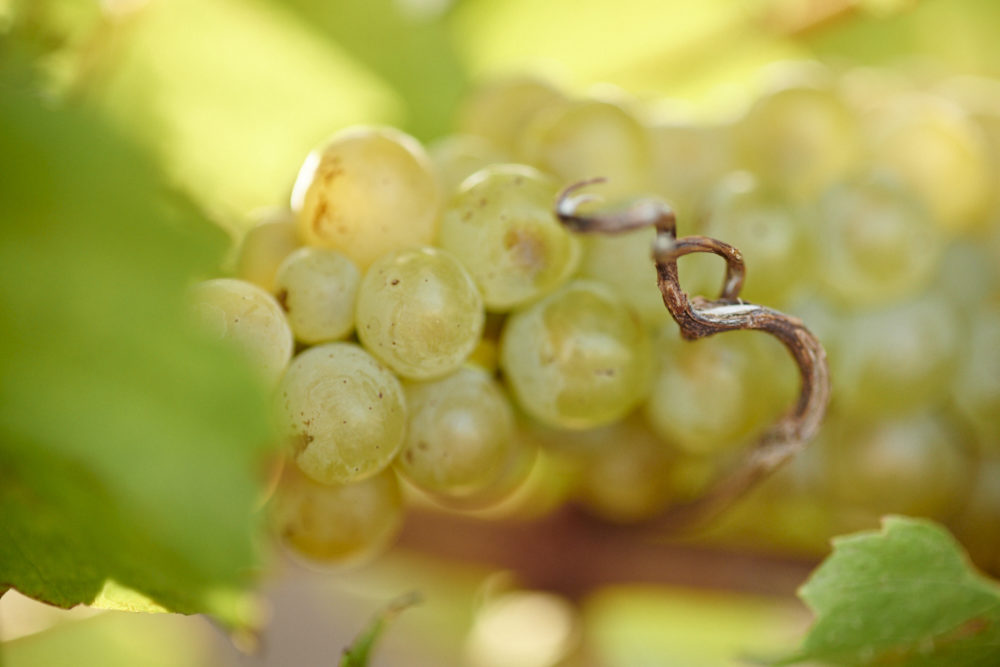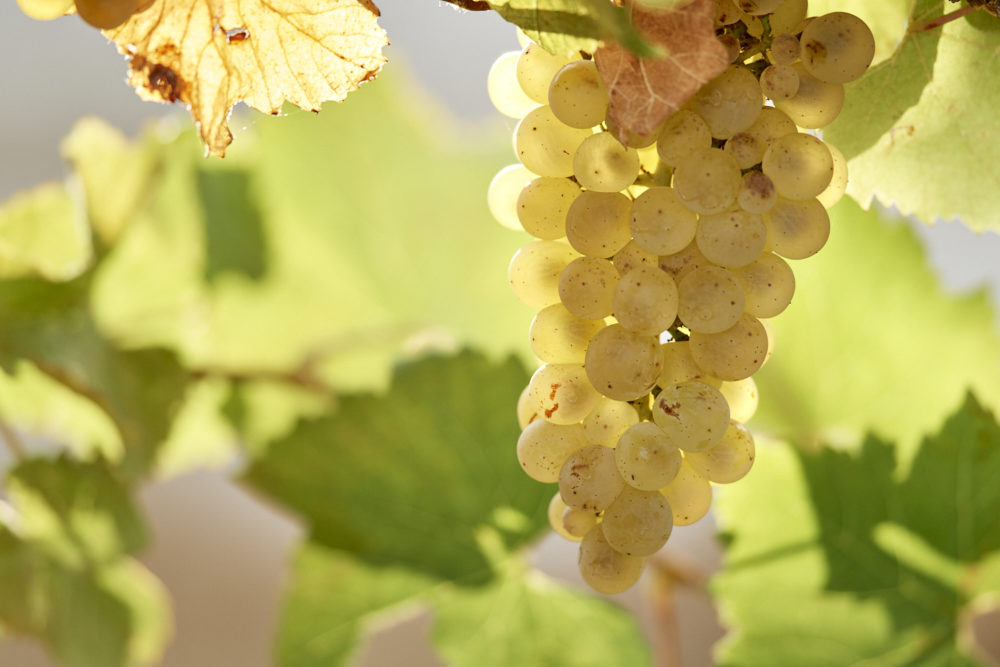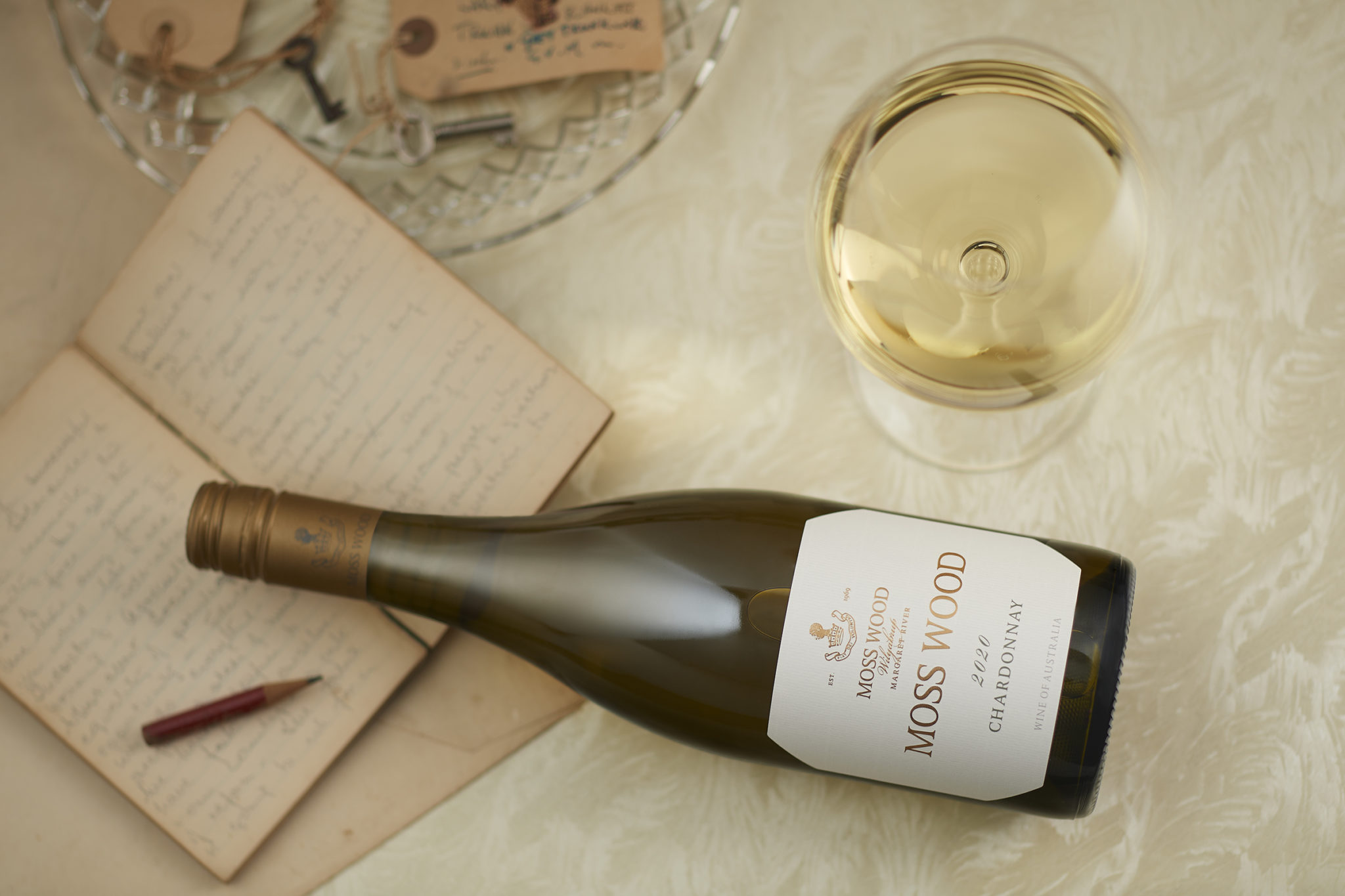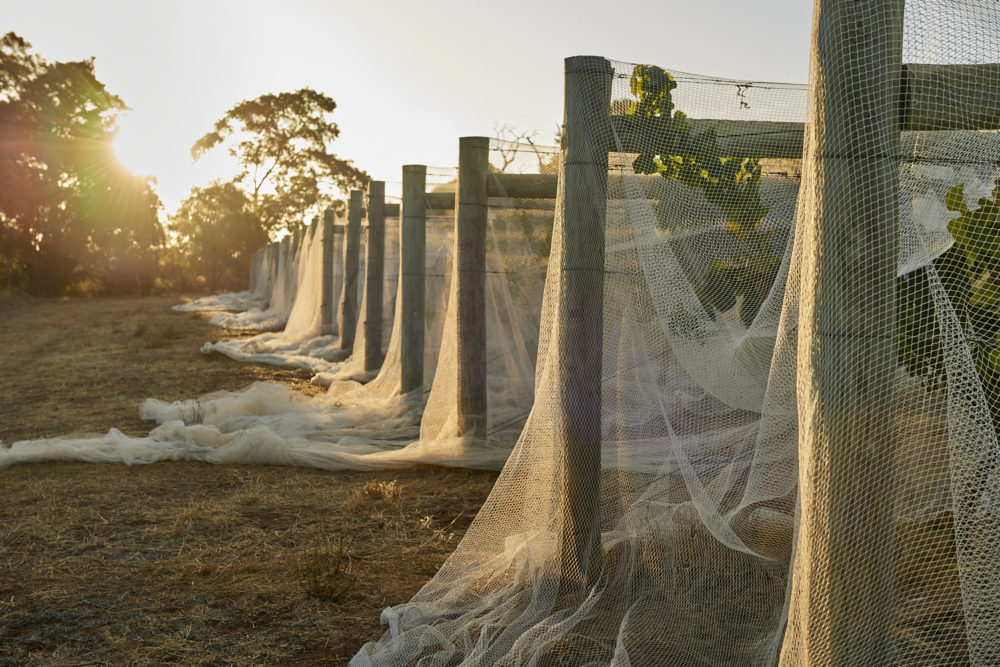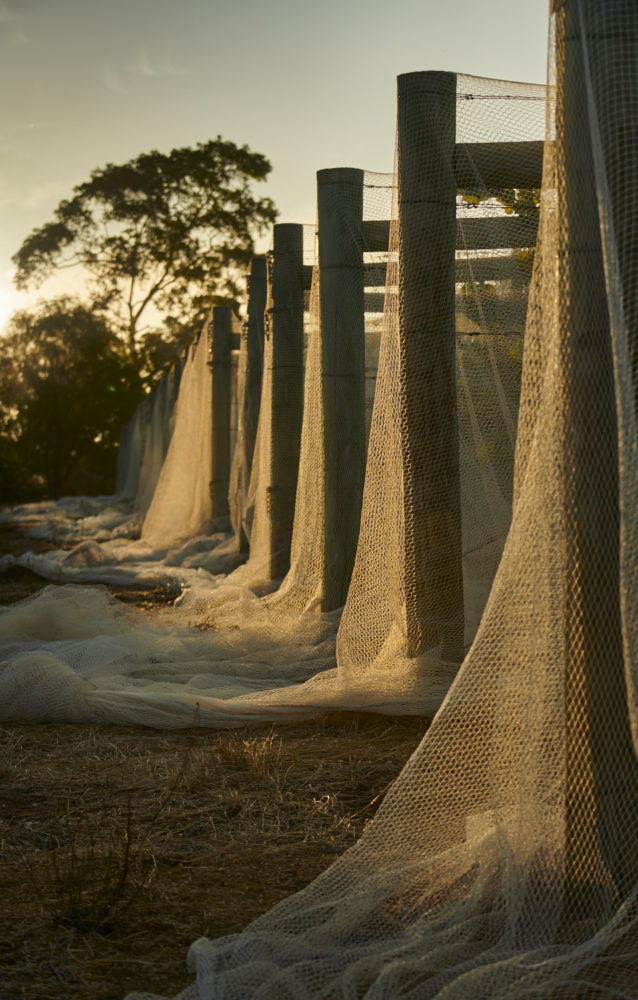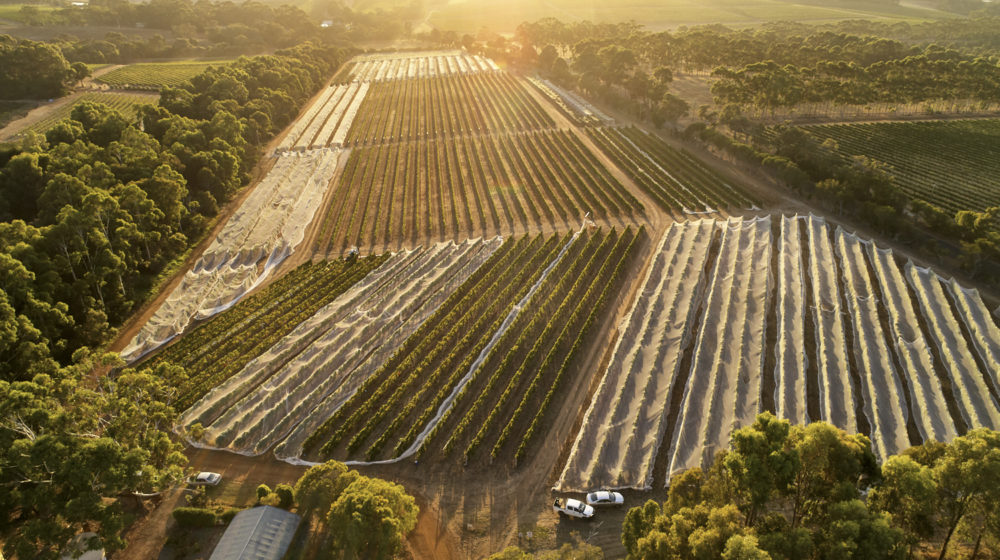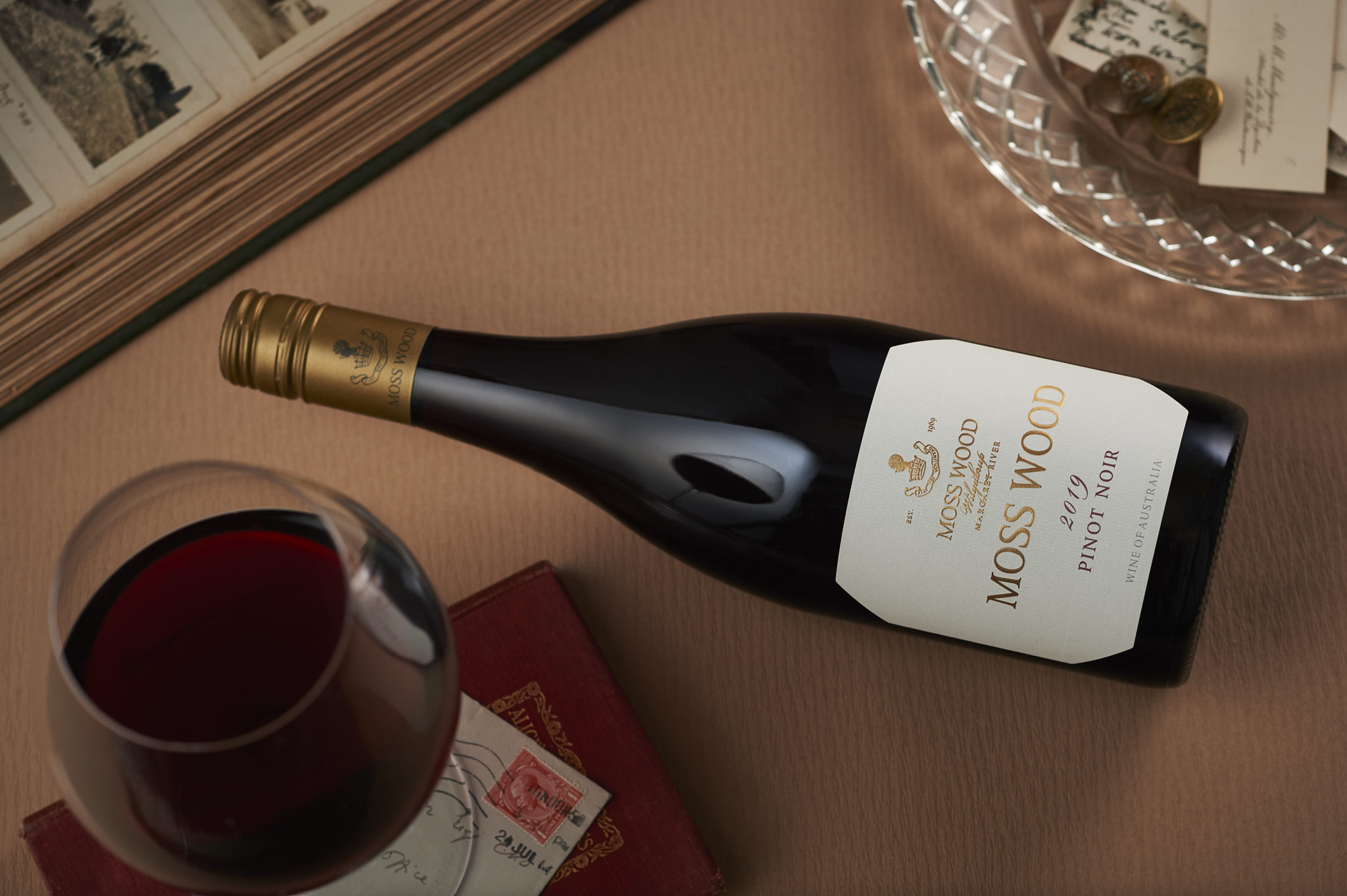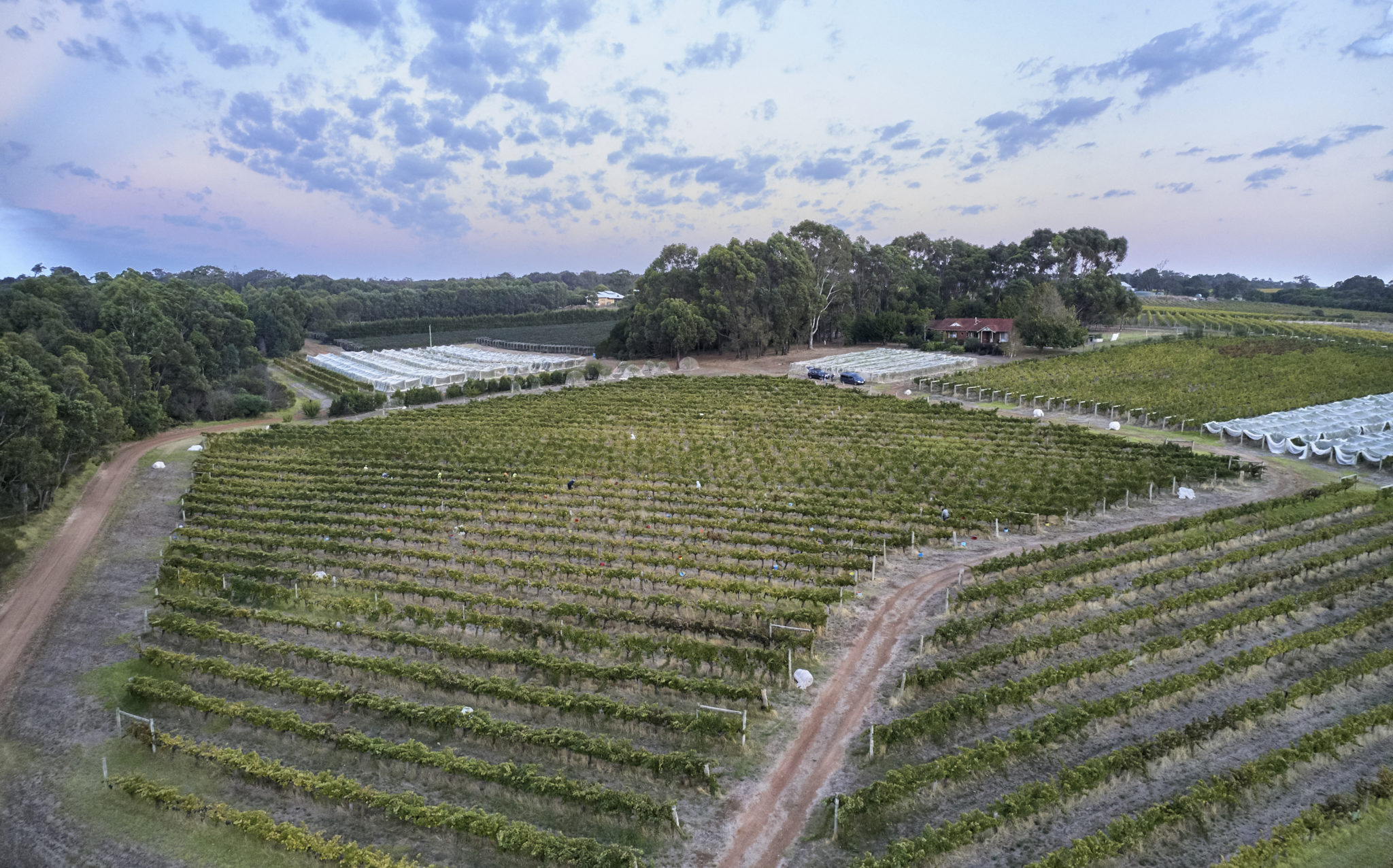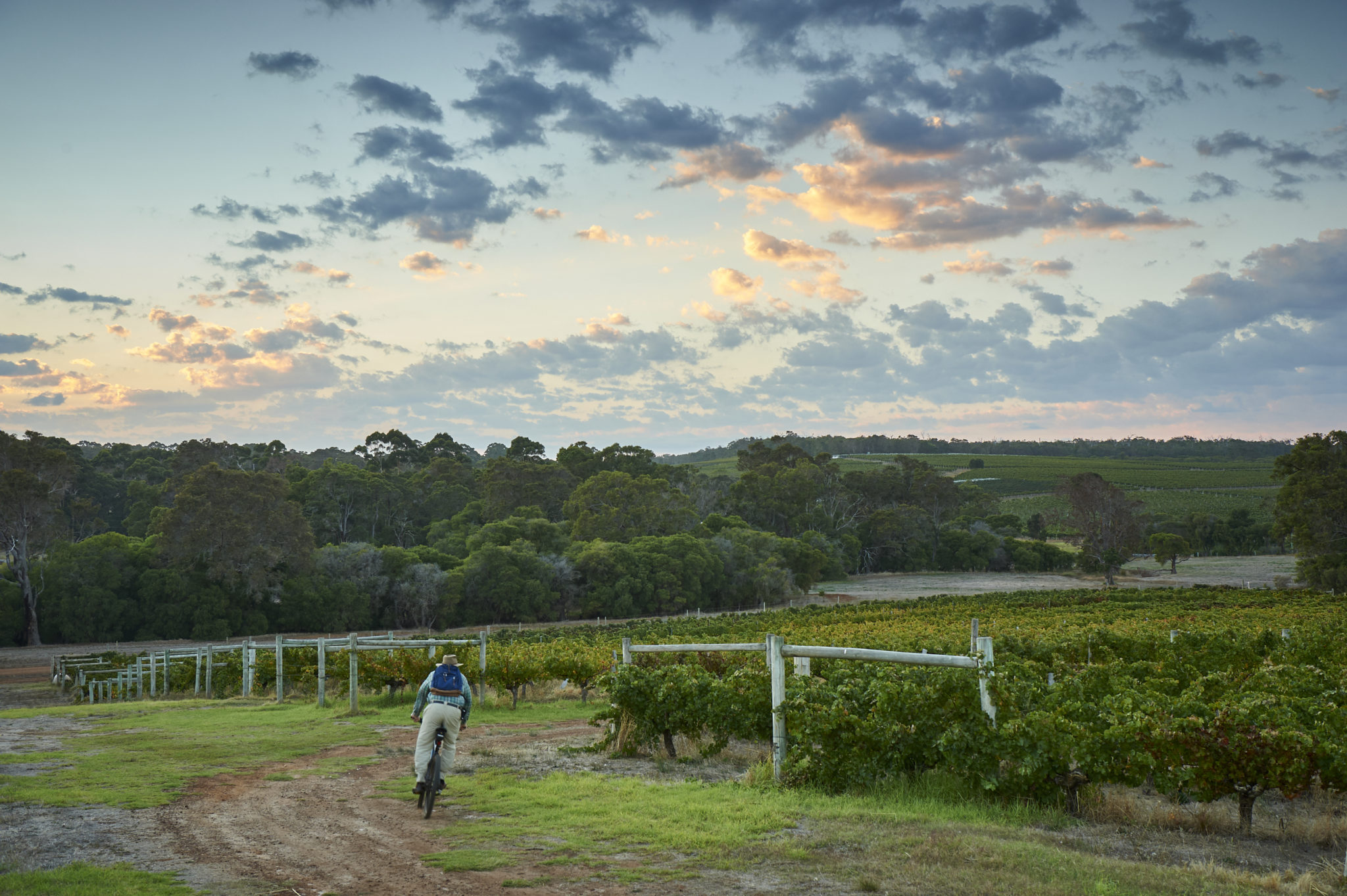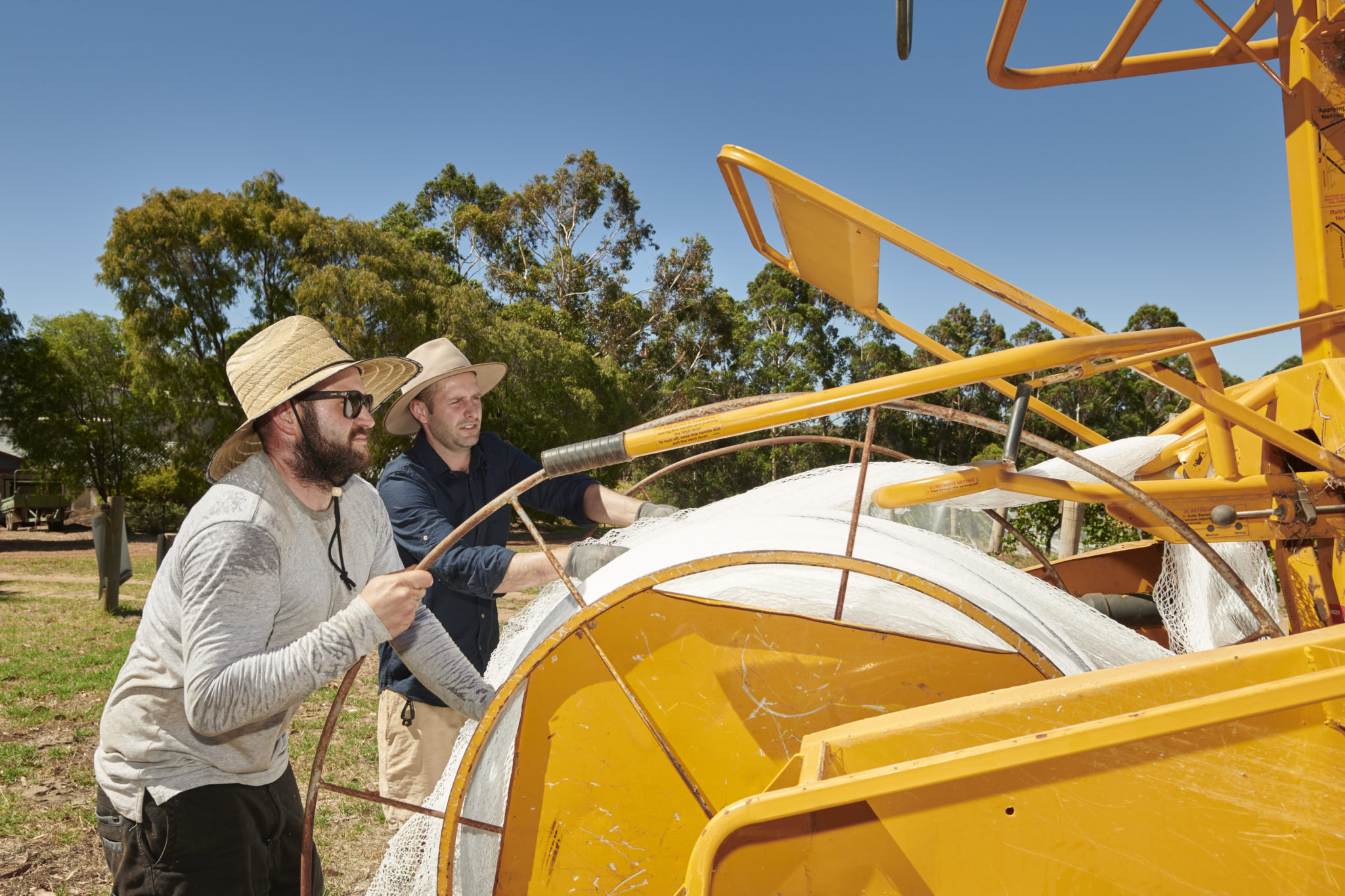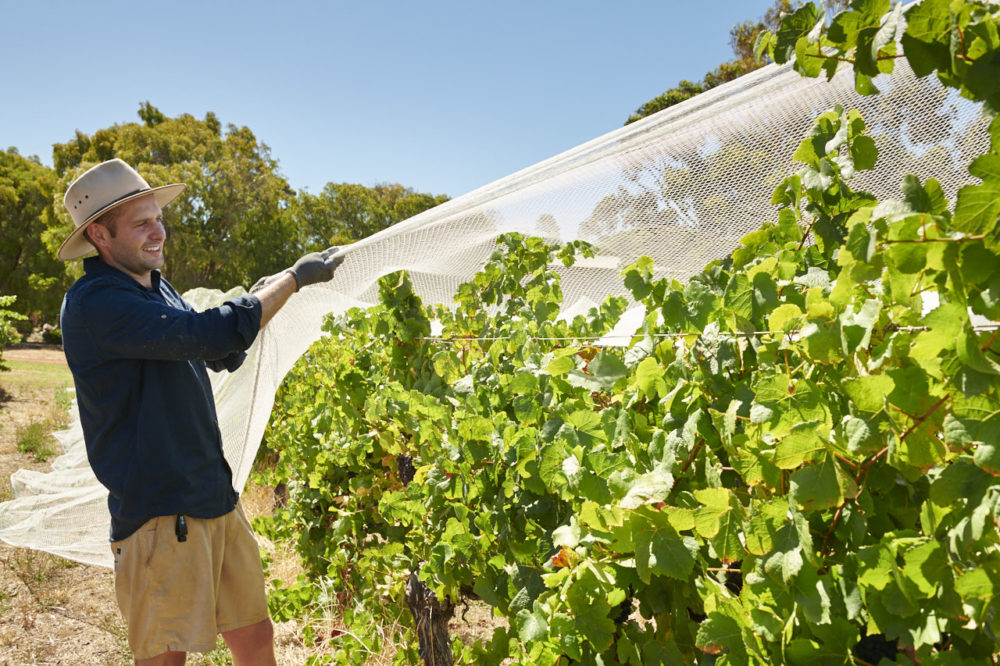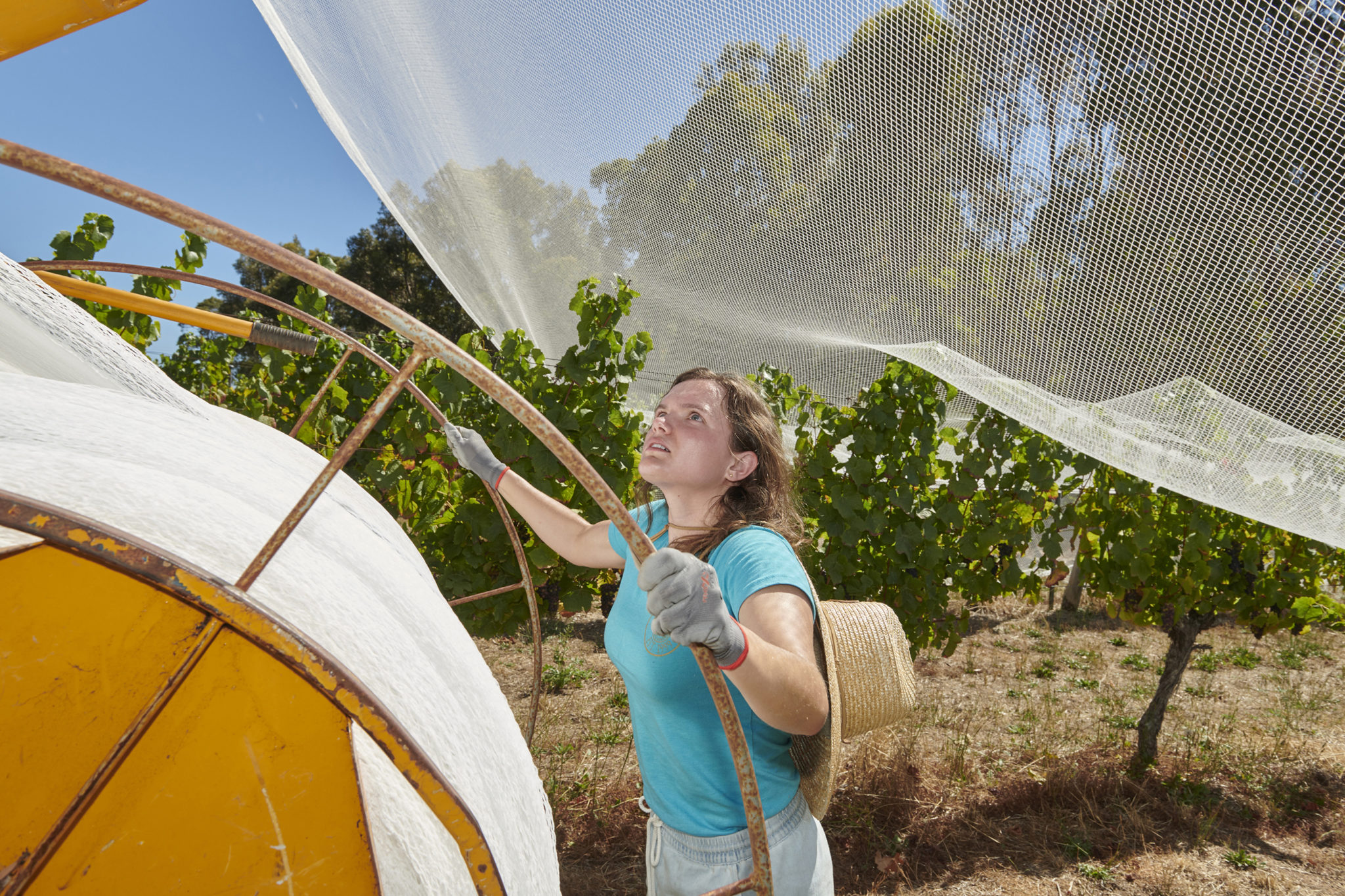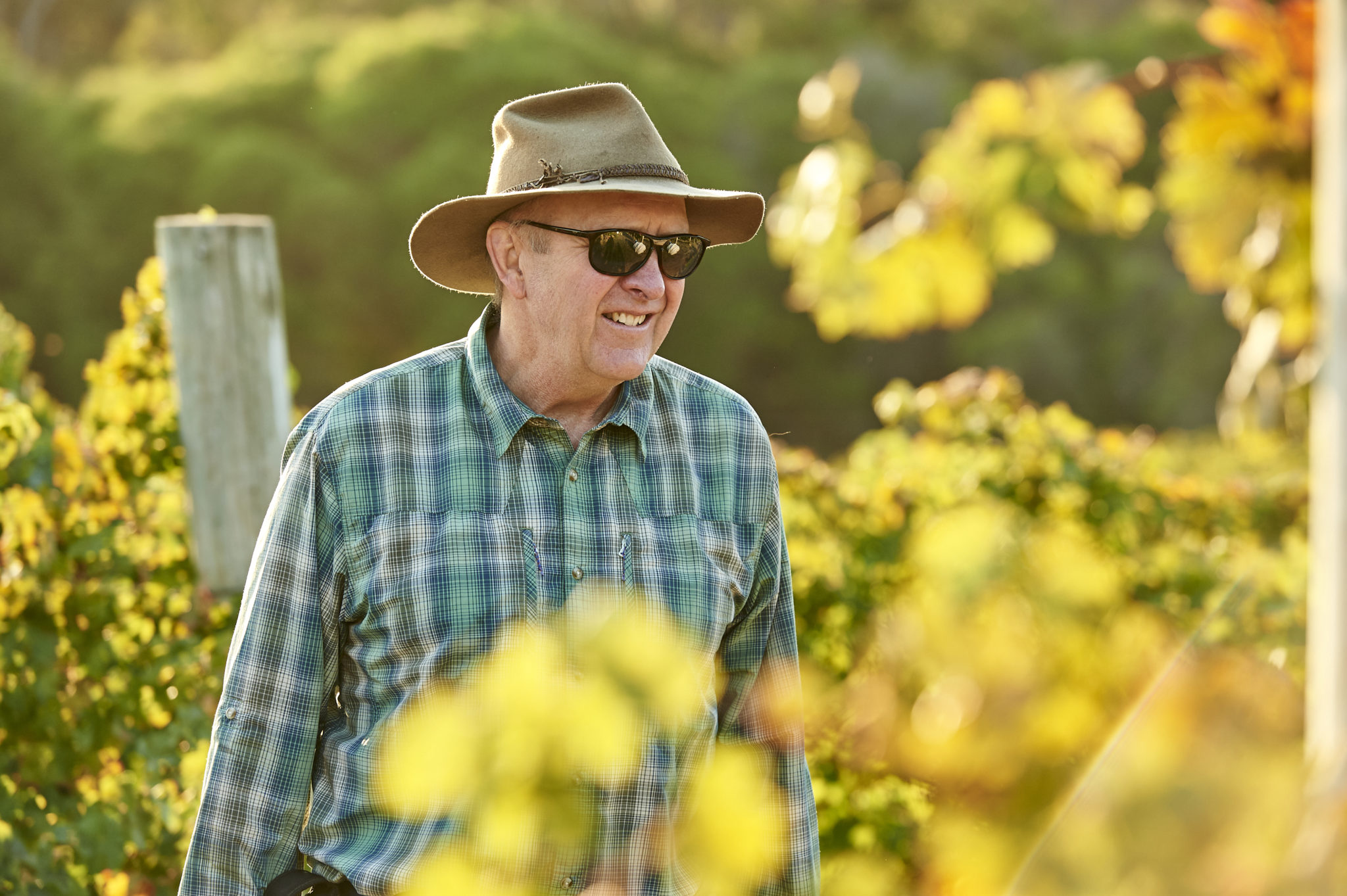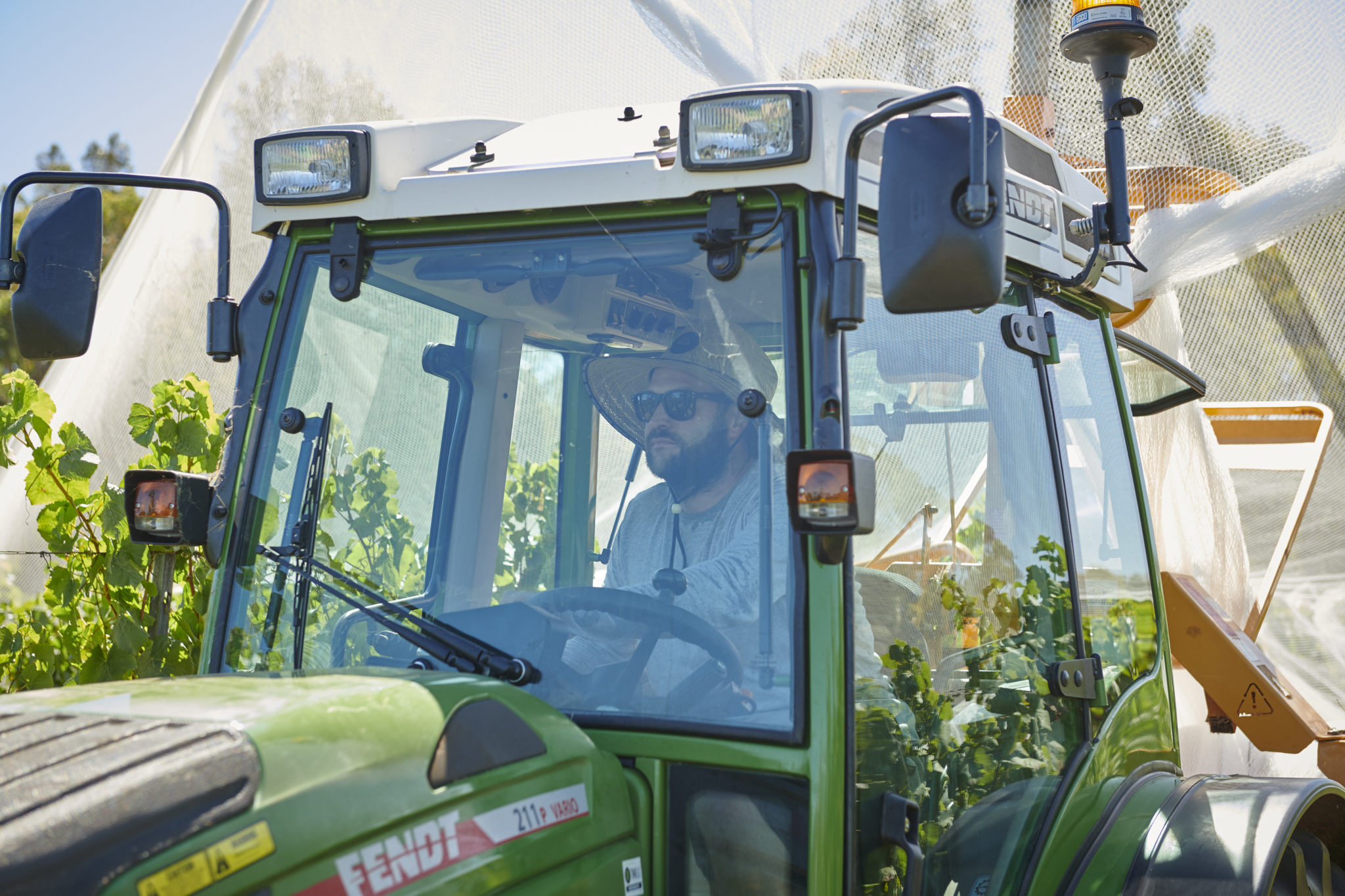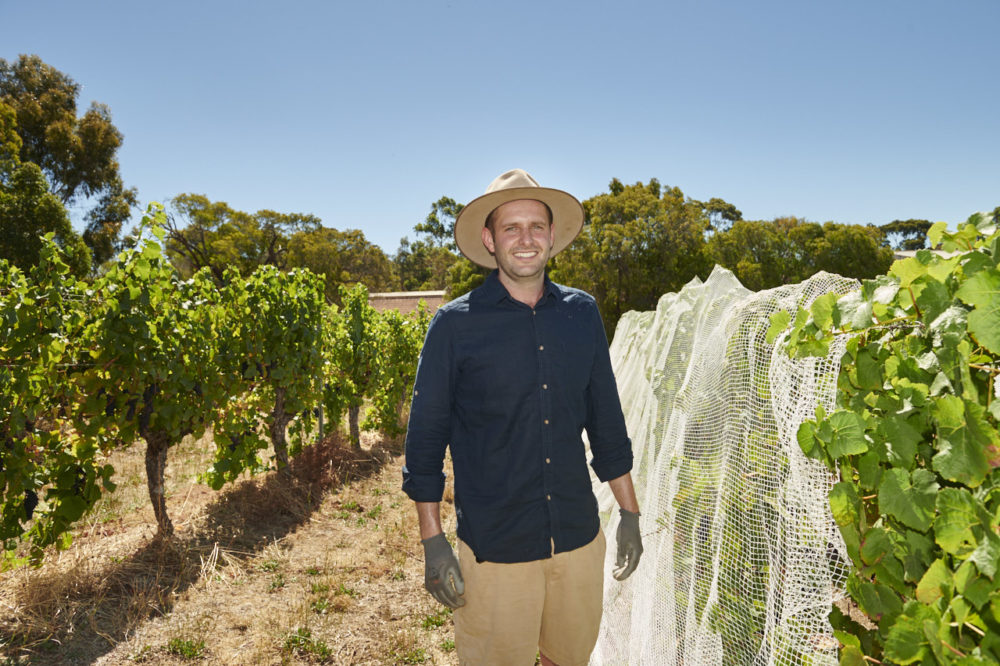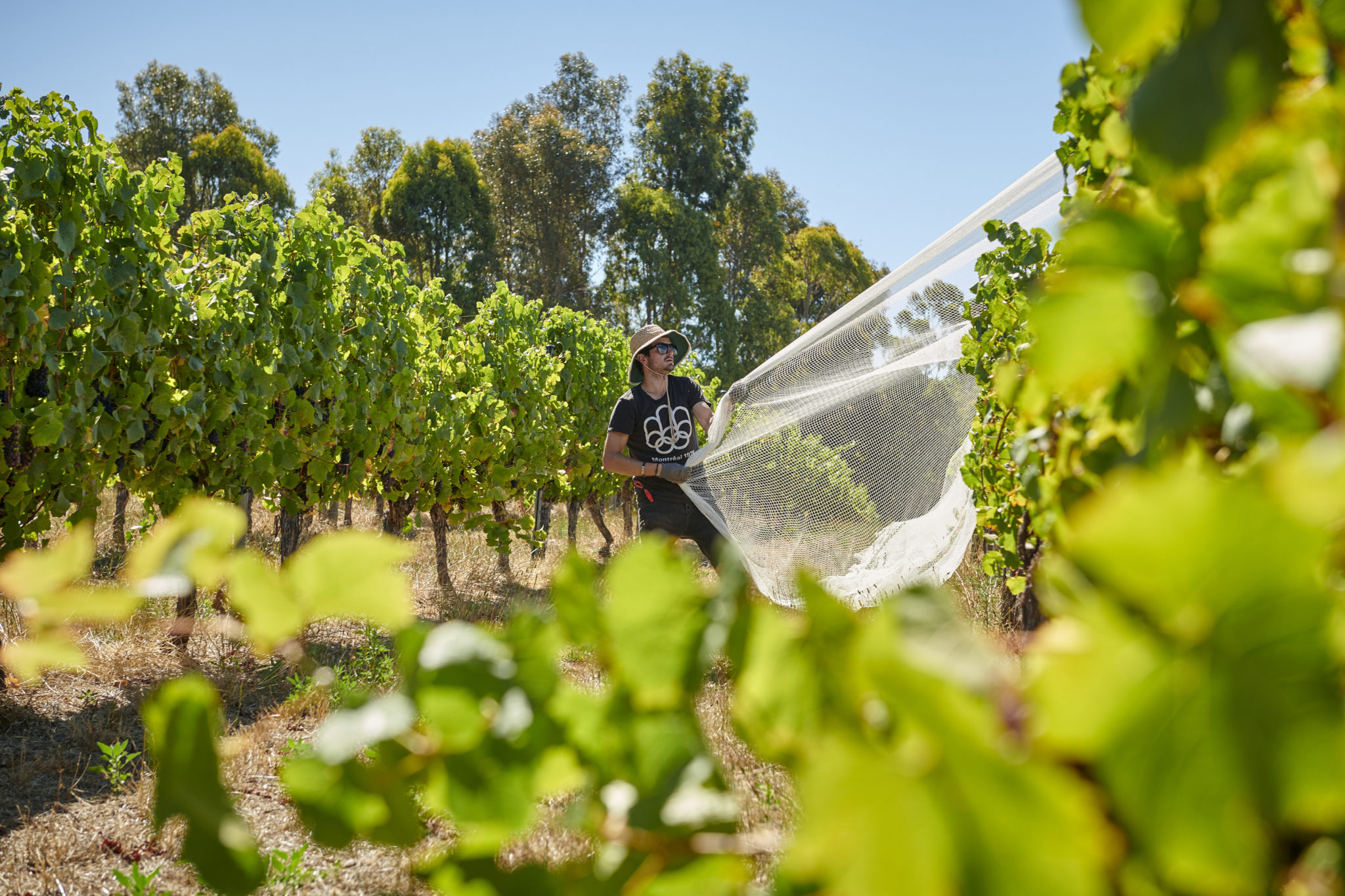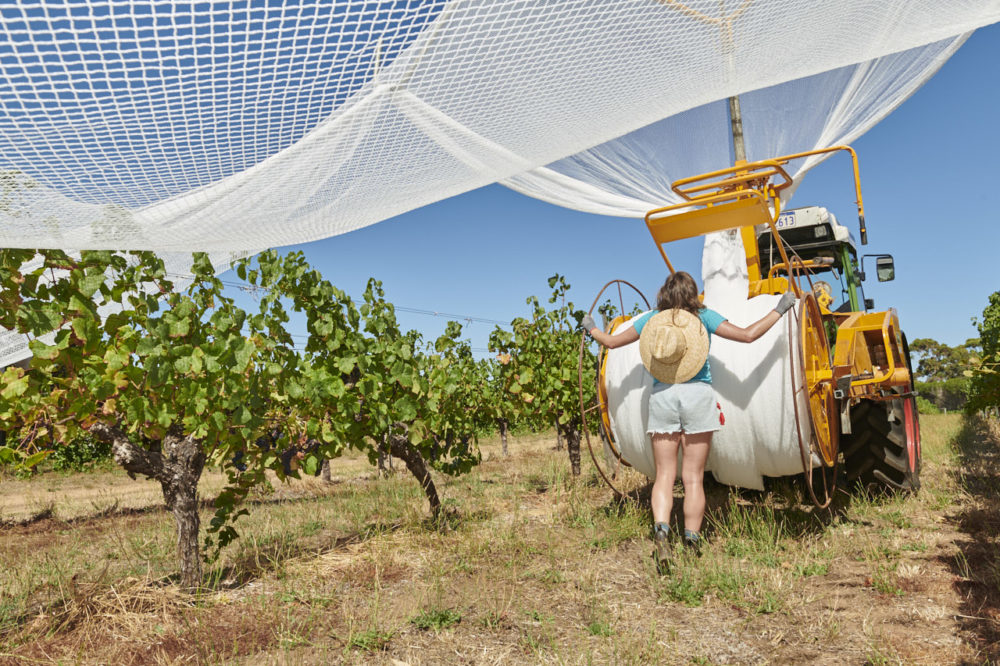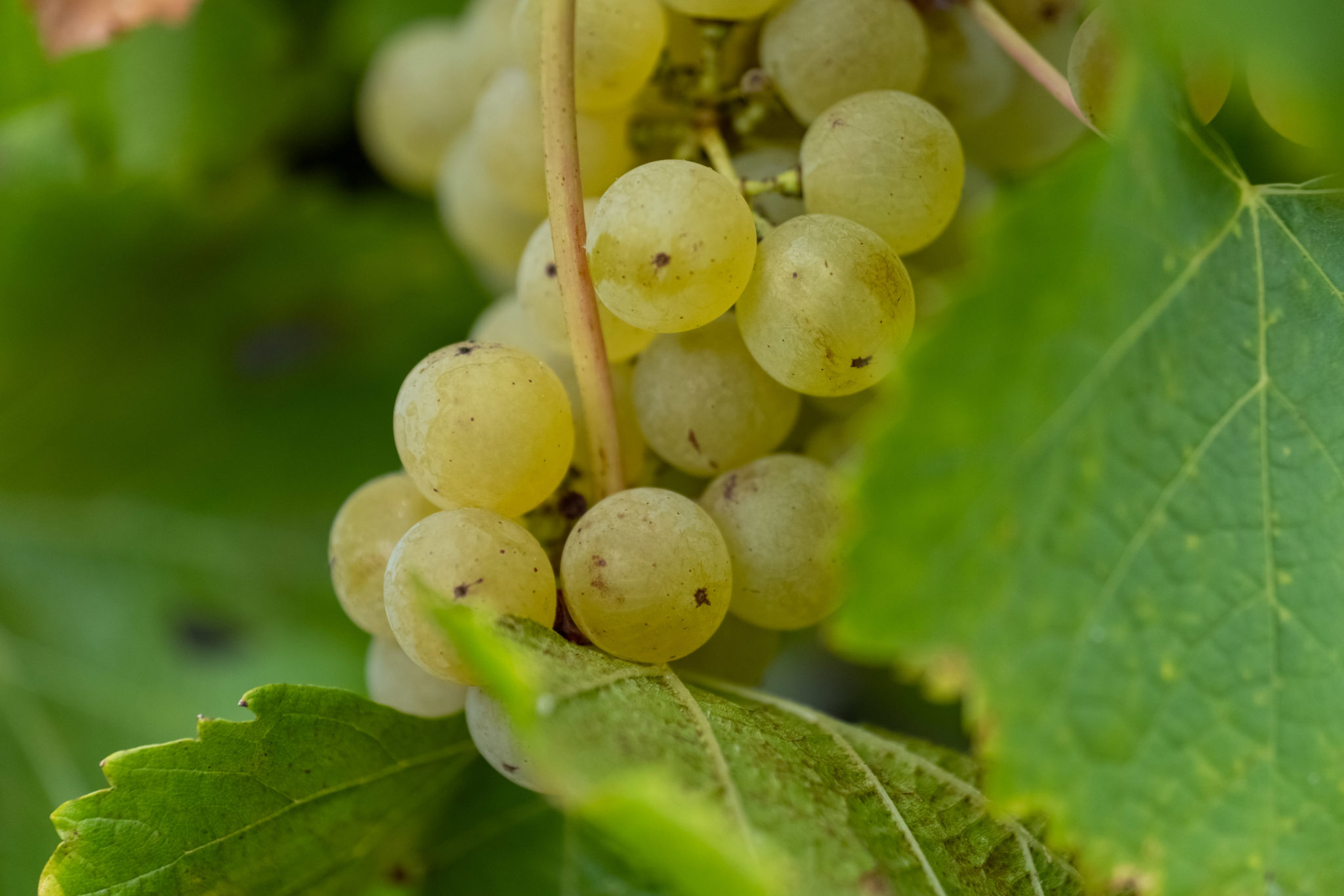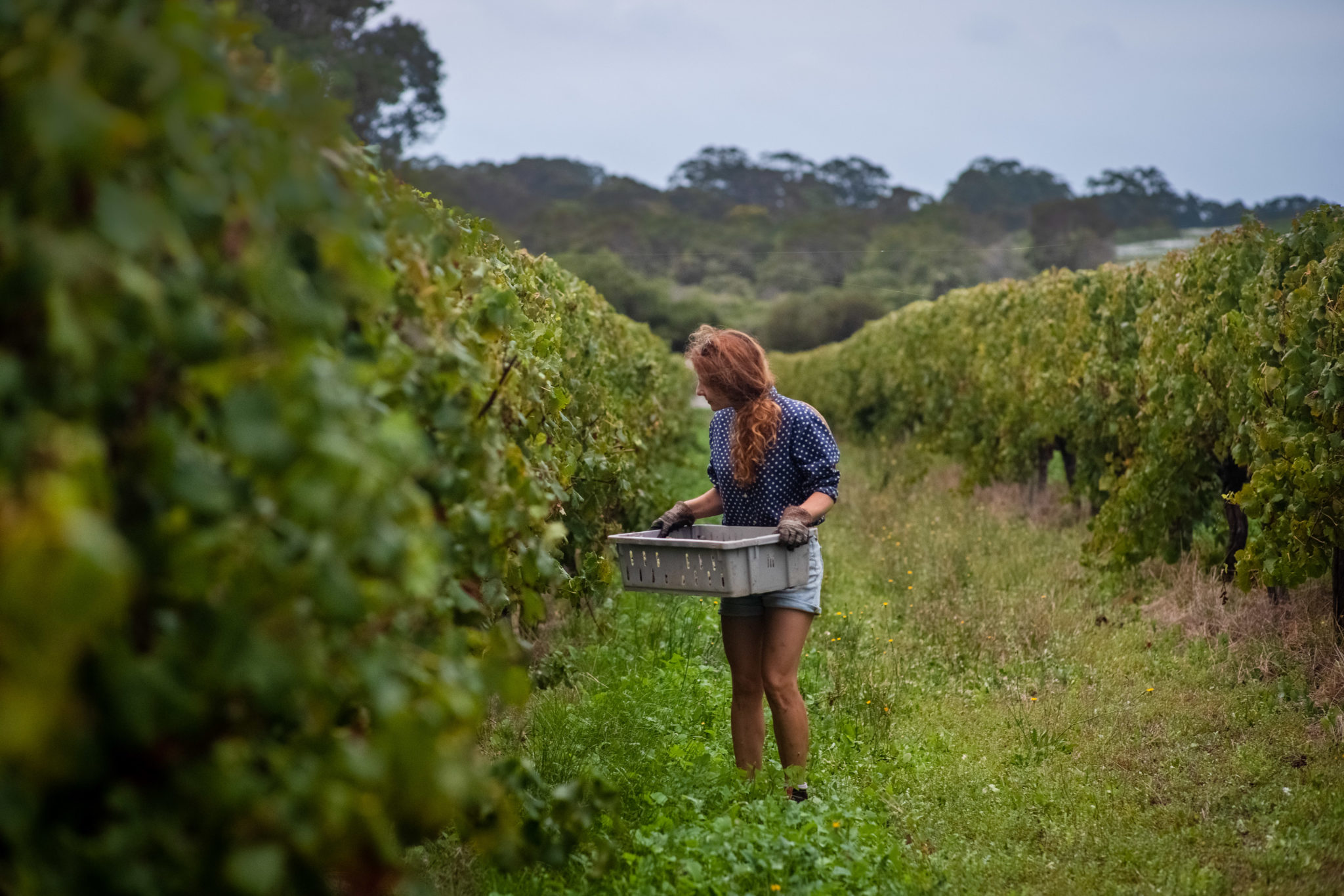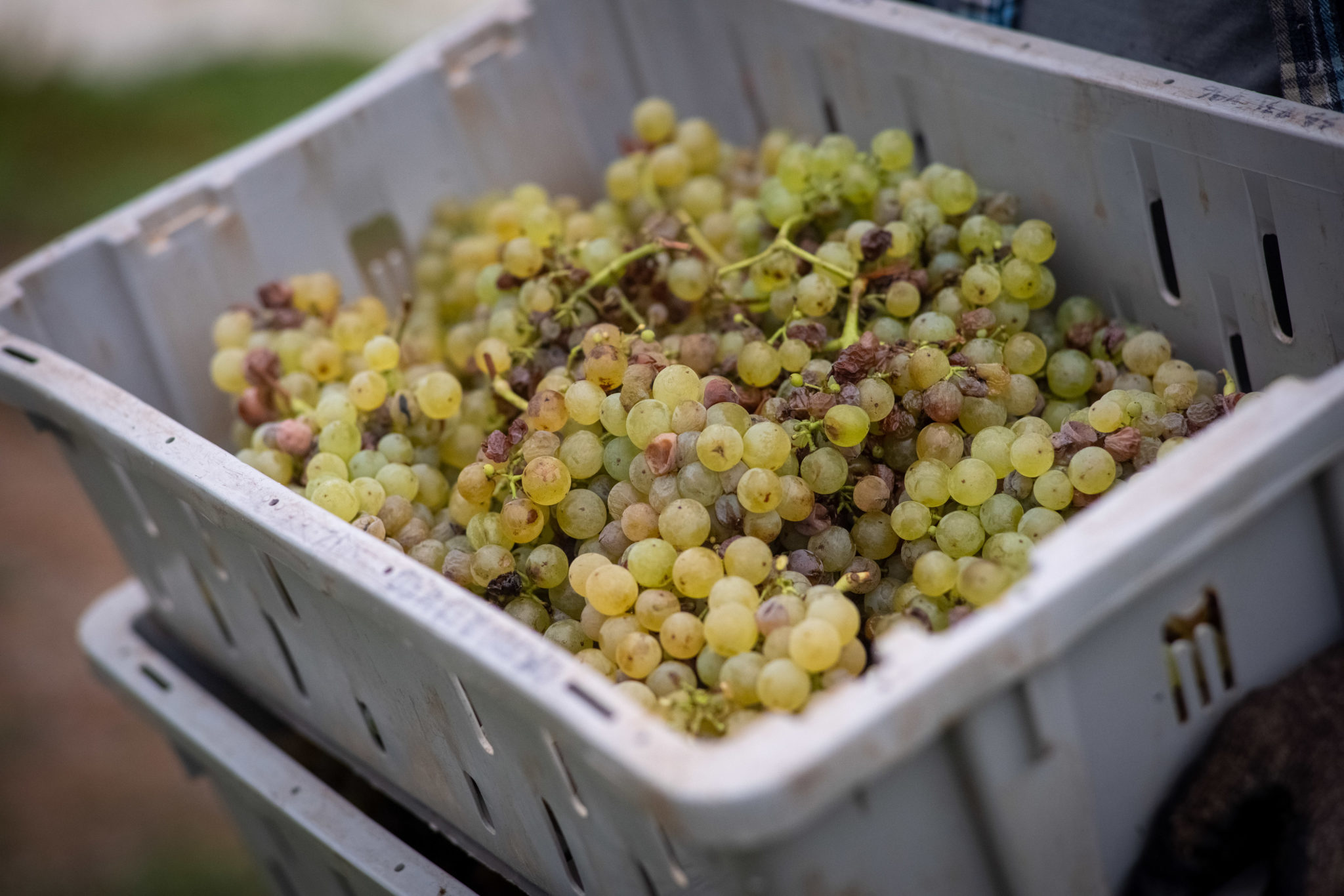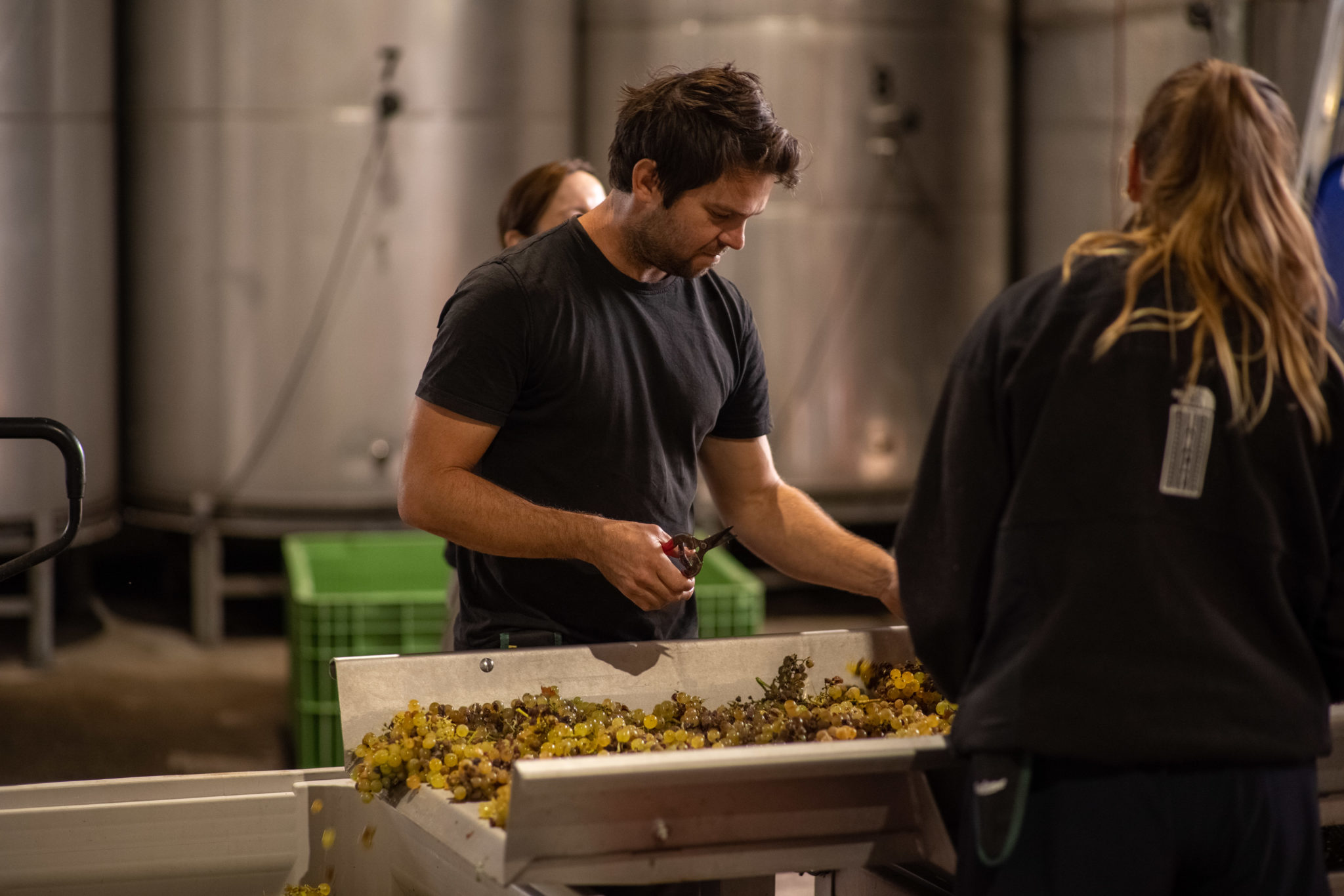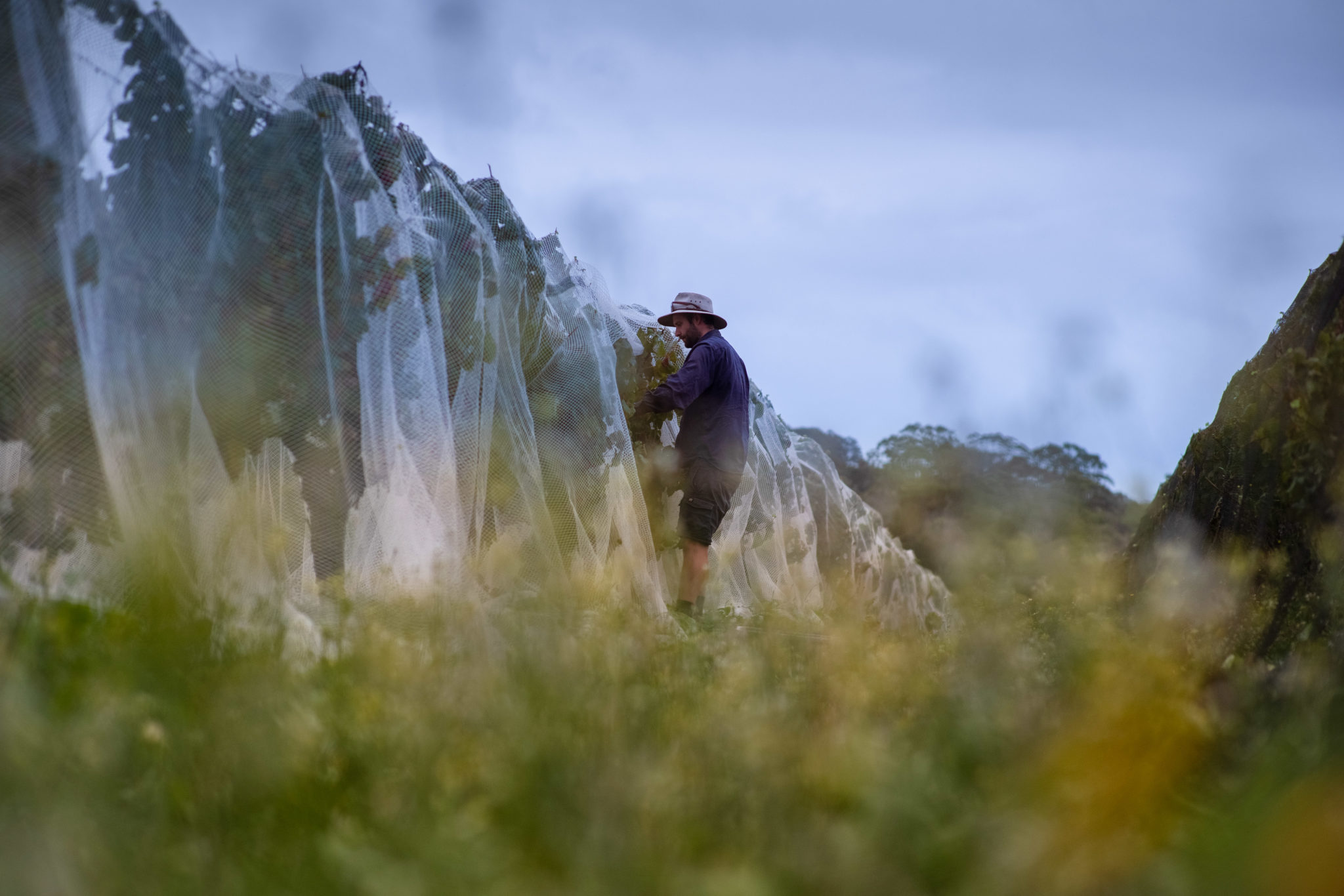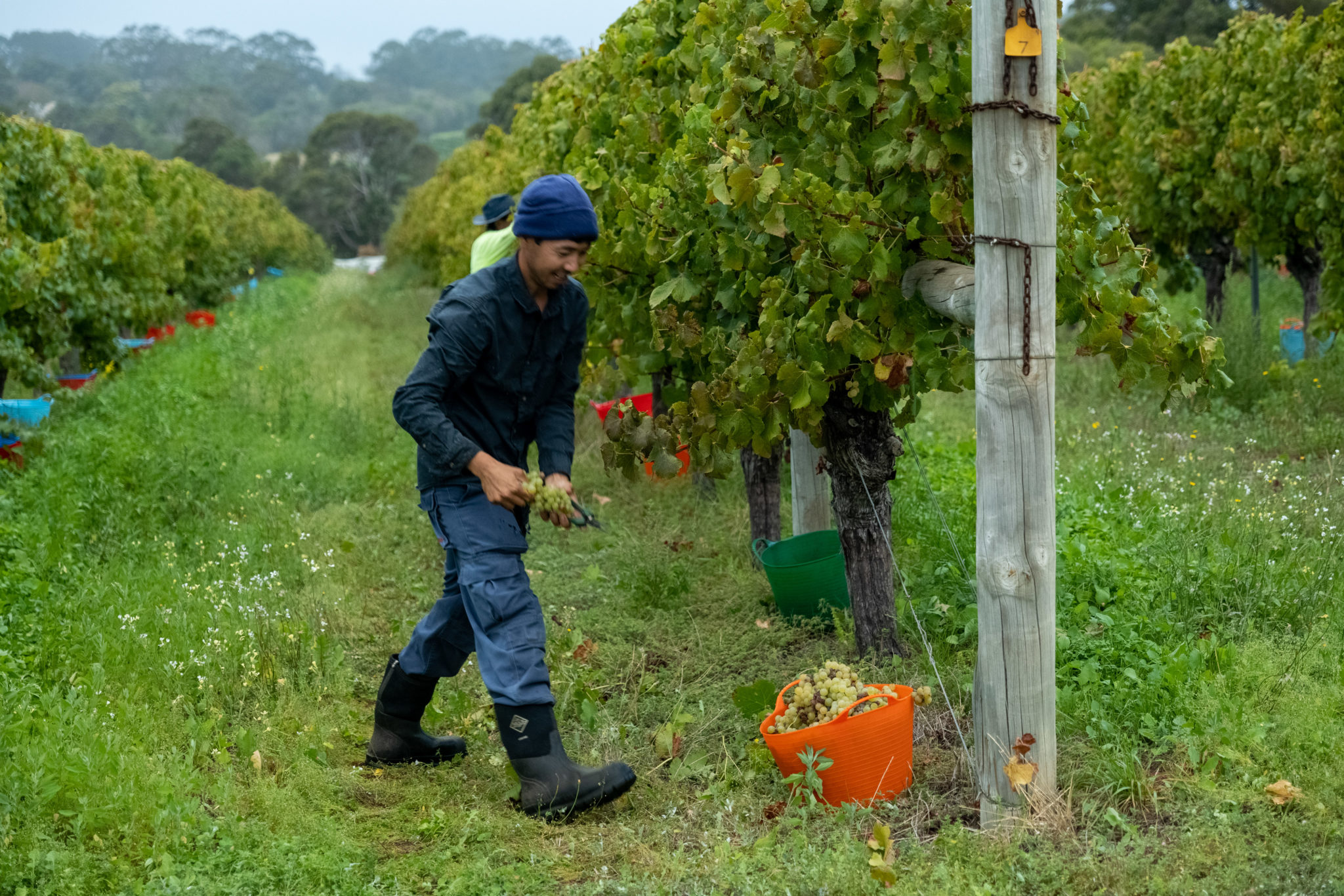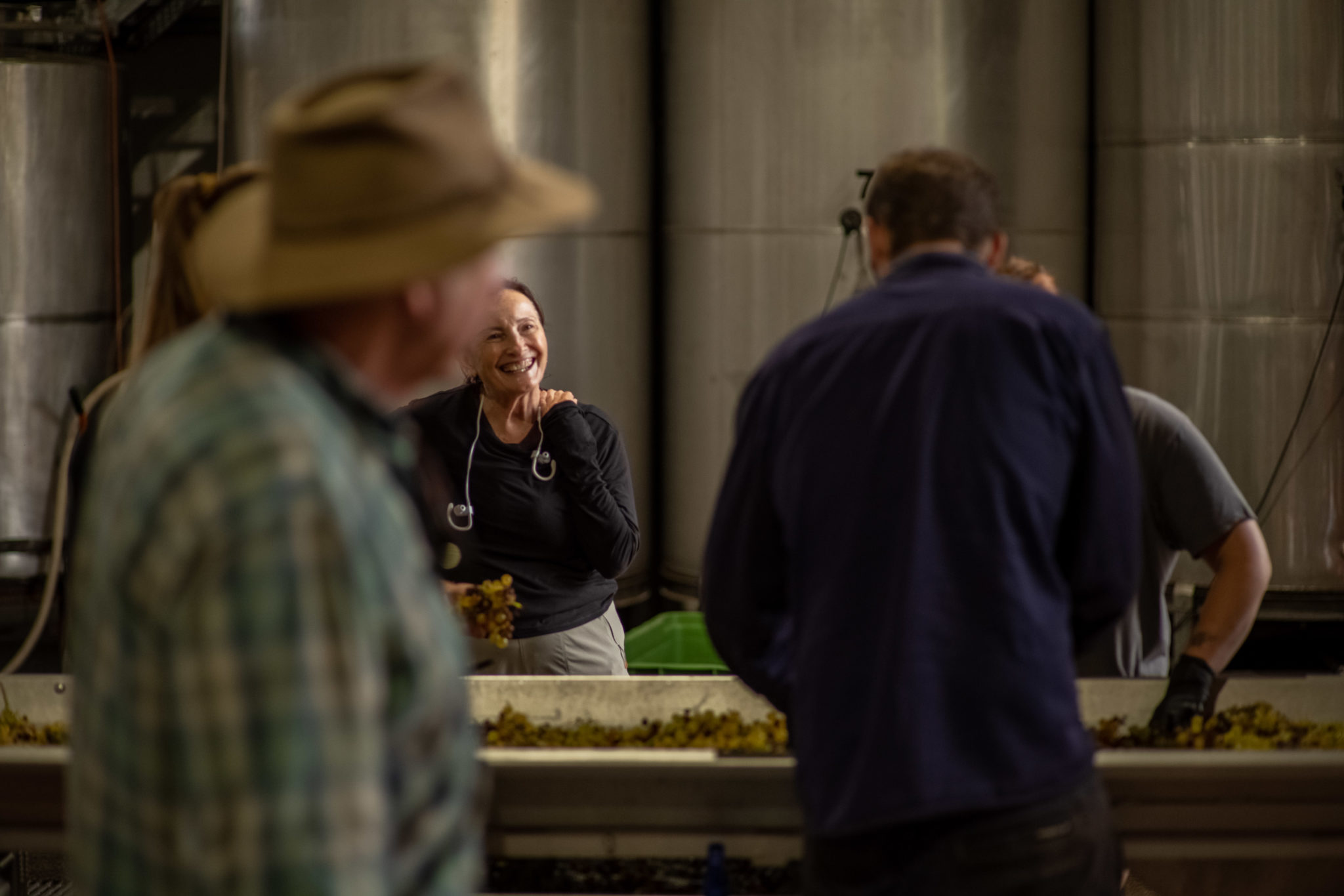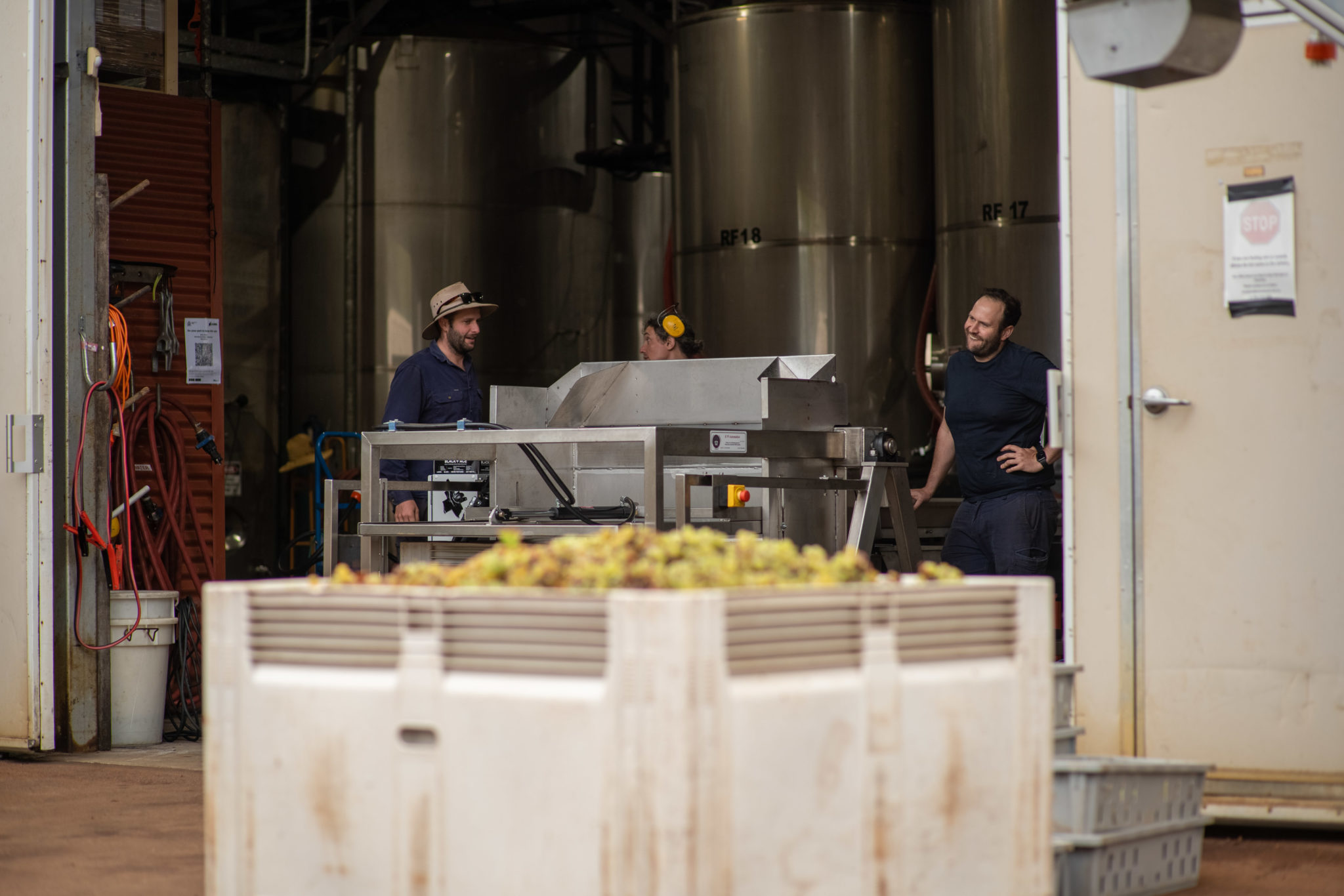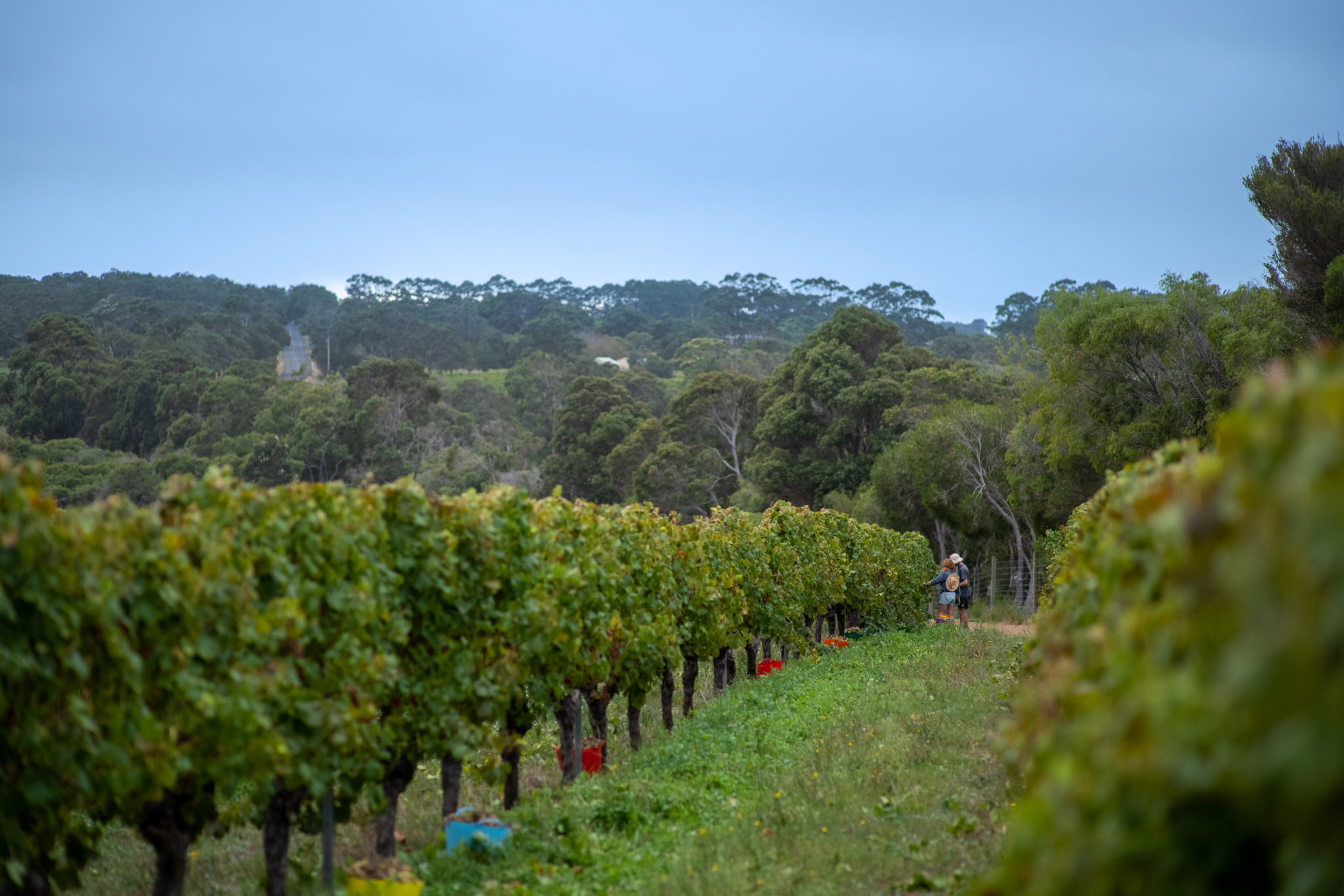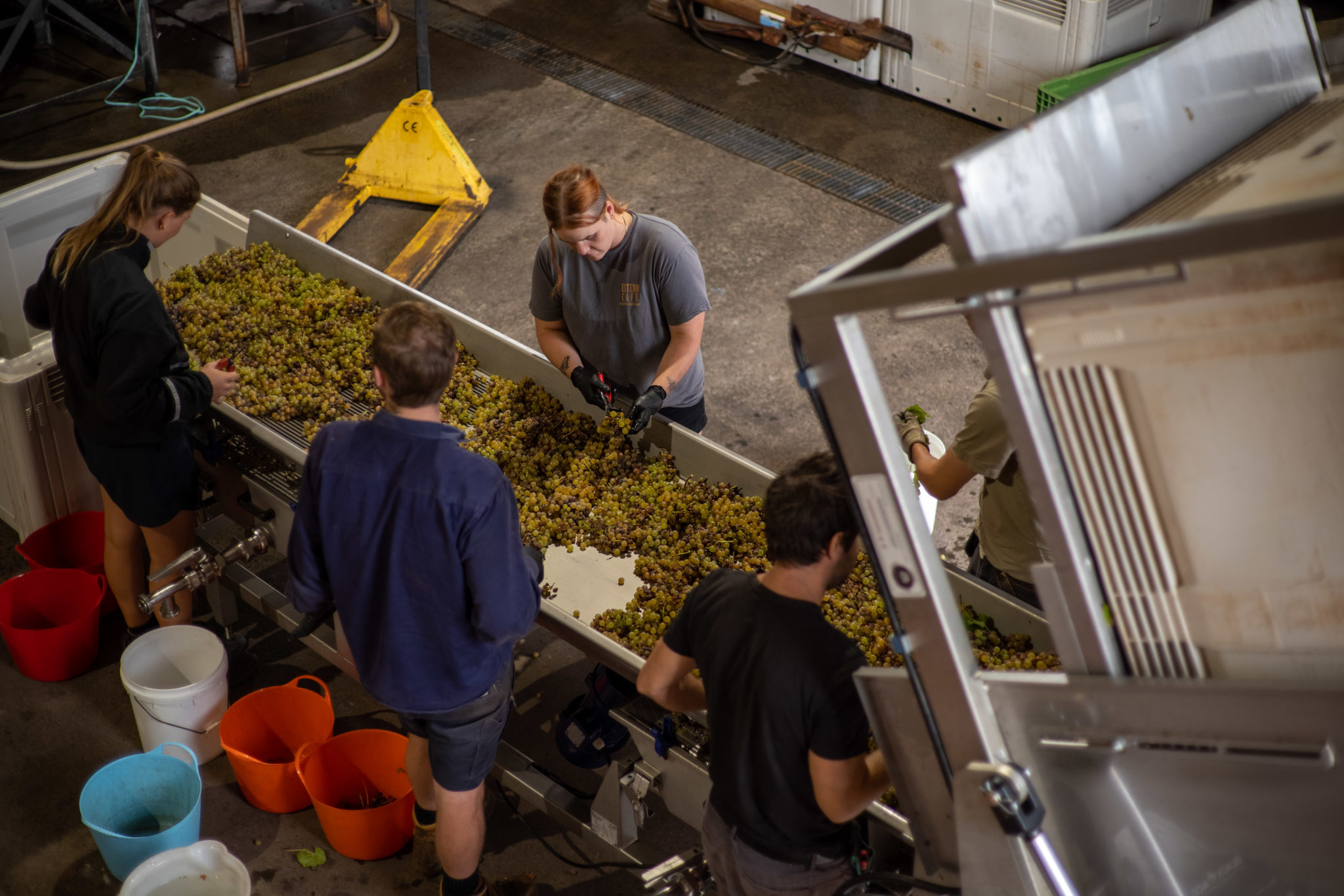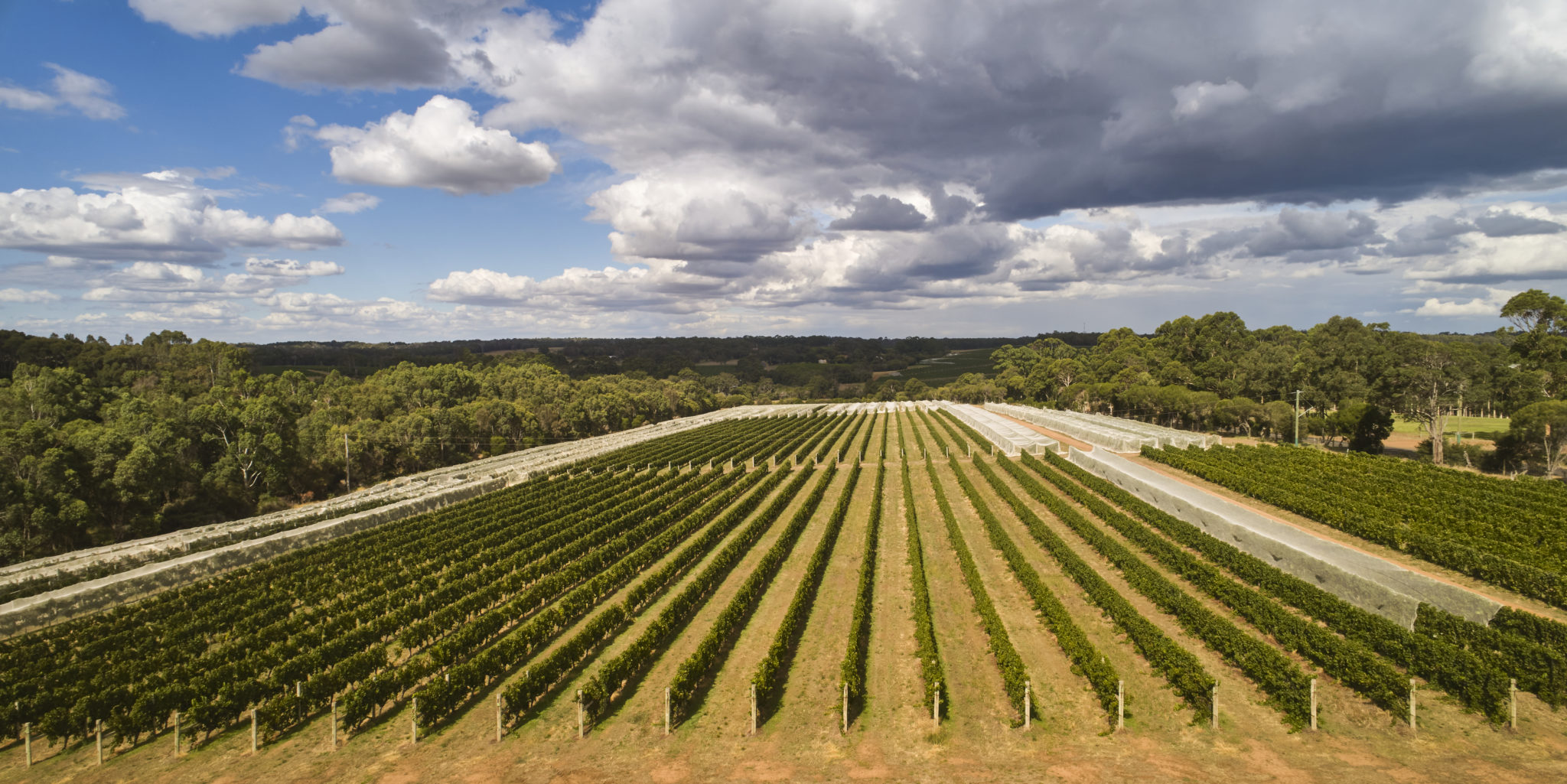Moss Wood Newsletter
Spring News Issue # 110 SEPTEMBER 2021
Moss Wood 2020 Chardonnay
Moss Wood 2019 Pinot Noir
Moss Wood 2021 Semillon
Moss Wood 2020 Chardonnay
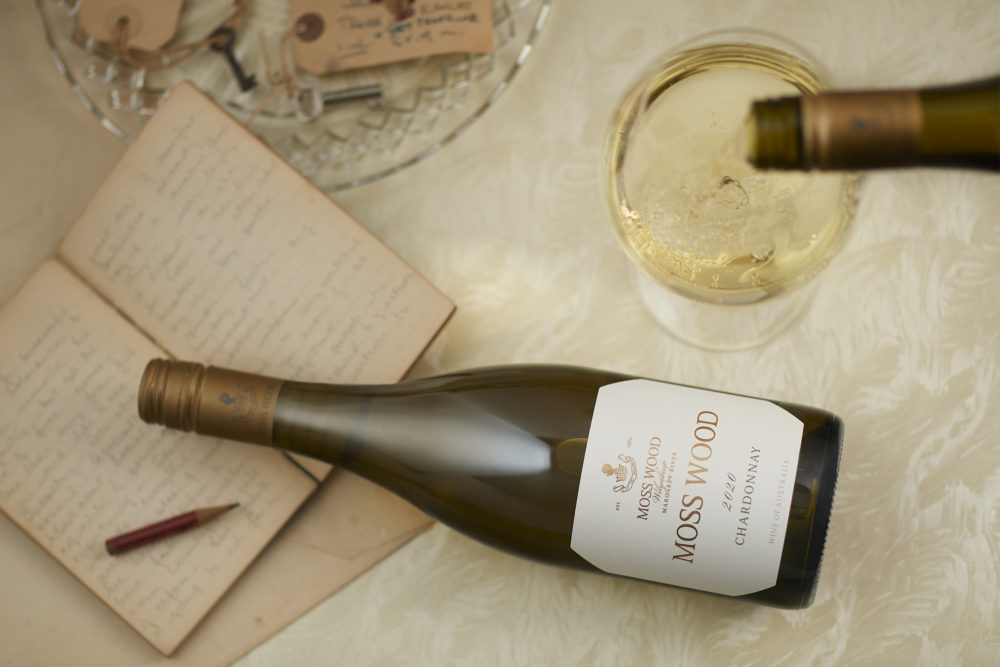
VINTAGE NOTES
Keith was lucky enough to travel to Germany at the beginning of October 2019, to join a cycling tour with several other powerhouse riders from the Cowaramup Turtle Brigade. After 2 weeks of climbing steep hills in the Black Forest, mostly in the rain and with the mercury rarely rising above 12°C, Keith concluded the “Golden October” the Germans speak of must be some sort of cruel joke. He was looking forward to getting home to some warmer weather. And flatter roads.
People may wonder what this has to do with Moss Wood 2020 Chardonnay?
Upon returning on 23rd October, it was clear the spring had been quite warm and the vines commenced flowering a few days early, on 14th October. Nice to be back, he thought, although the weather on the drive home from Perth was threatening. Later that night, lying in bed at 12.15am listening to the rain, things became serious as the drumming on the tile roof got really loud. It was hailing! He thought all that had been left behind in Germany!
Although we have a fairly benign maritime climate, there’s always a risk of strong winds and hail. The weather systems crossing the southern Indian Ocean have nothing between South Africa and Western Australia to slow them down, so they can hit our coastline with some ferocity. Our mild climate means all varieties, but especially Chardonnay, have an early budburst, leaving it exposed to inclement conditions. In 2019 we experience the roughly one in five year event when we get serious damage.
A hailstorm is common enough that we’ve learned to remain rational about the whole thing. Not all hail is damaging but the longer it lasts the greater the risk of harm. We can also treat the damaged tissue with targeted fungicides to ensure losses are not exacerbated by secondary infections. We’re not completely defenceless.
It pays to wait a few days before assessing the extent of the damage since it takes some time for the bruising to become obvious. It helps ensure we don’t underestimate the harm. In this case, scouting the vineyard a week later confirmed moderate losses, which became obvious at harvest time. The hail had taken out a reasonable number of bunches, down by about 16% but the weight of those bunches was down 39%. It meant overall the Chardonnay yield of 4.89 t/ha was down by a frustrating 28%.
Having devoted such a long commentary to another reminder from Mother Nature that we make wine at her pleasure, readers will probably be amused to learn the rest of the season was excellent. Temperatures were warm, with an average across the period of 19.9°C and the vines experienced 1210 hours in their preferred range of 18-28°C. With the small crop and such good conditions, harvest got under way 2 weeks early on 18th February, at a slightly higher than average ripeness of 13.3° Baume.
PRODUCTION NOTES
All the fruit was hand-picked and delivered to the winery where it was sorted for any damage and then whole bunch pressed. The must was settled in stainless steel tanks for 48 hours before the clear juice was racked and seeded with multiple yeast strains for primary fermentation. Once under way, the fermenting juice was transferred to 228 litre French oak barrels, half of which were new, on 27th February. In barrel, the wine completed a full malolactic fermentation. After almost exactly 17 months on 28th July 2021 all the barrels were racked and blended in stainless steel and fining trials were carried out to assess tannin balance. In the end, the wine needed no further adjustment but was treated with a light dose of bentonite for protein stability. On 9th August 2021 it was sterile filtered and bottled.
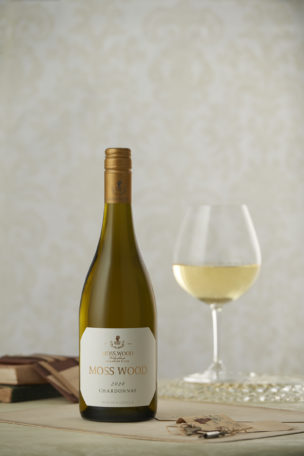
| Wine Facts | |
|---|---|
| Median Harvest Date | 18/02/2020 |
| Harvest Ripeness | 13.3°Be |
| Yield | 4.59t/ha |
| Weather Data | Growing Season Ave Temperature – 19.9⁰C Number of hours accrued between 18 and 28°C – 1210 Number of hours above 33°C – 68 |
| Days Elapsed between Flowering and Harvest | 111 days |
| Bottled | 09/08/2021 |
| Alcohol | 14% |
Wine Facts
-
Median Harvest Date
18/02/2020
-
Harvest Ripeness
13.3°Be
-
Yield
4.59t/ha
-
Weather Data
Growing Season Ave Temperature – 19.9⁰C
Number of hours accrued between 18 and 28⁰C – 1210
Number of hours above 33⁰C – 68
-
Days Elapsed Between Flowering and Harvest
111 days
-
Bottled
09/08/2021
-
Alcohol
14%
Tasting Notes
Colour and condition
Medium to deep straw hue; bright condition.
Nose
Fruit aromas are typical Moss Wood ripe peach, combined with a zesty note similar to cumquat marmalade. These combine with lots of roast almonds and cashews, shortbread biscuits, malt and toasty oak for added complexity.
Palate
The palate is lively, with fresh acidity giving lift to peaches, limes, grapefruit and caramel; there is full body and firm tannin underneath, so the wine displays good length and there is just a touch of malt and toasty oak on the finish.
.
Cellaring
We confront the usual dilemma with cellaring Moss Wood Chardonnay. On the one hand, its generous fruit notes and complexity provide very enjoyable early drinking and so we encourage customers who enjoy these youthful characteristics to drink the wine now. However, for those who prefer the mature notes in Chardonnay we recommend cellaring for at least 10 years to allow the wine to develop some bottle bouquet. Full maturity will be reached around 20 years of age.
Moss Wood 2019 Pinot Noir
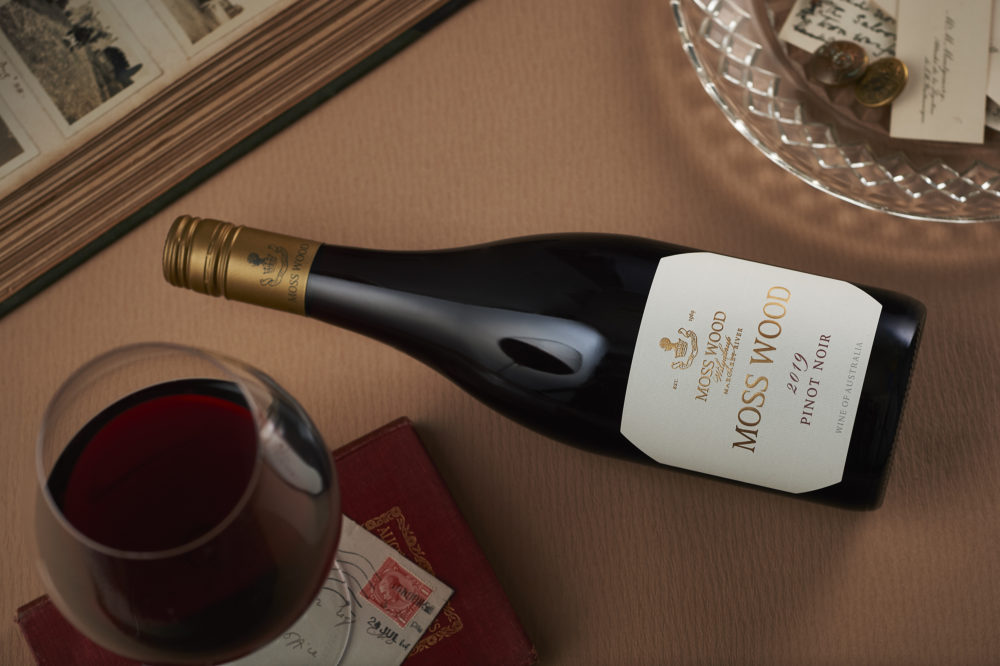
VINTAGE NOTES
One of wine’s great attractions is the natural variations in style that come with each new season. It’s a fascination for both winemakers and consumers. On the production side, vignerons are mere spectators while Mother Nature goes about her business and as events unfold, we wait to see which new direction we might be going in. So, it was in 2018/19 growing season.
The fun started right at the beginning, when we had a frost on 16th September. Luckily for the Pinot Noir, the vineyard is situated high enough in our valley for the cold air to drain away on a frosty night, so no problem there. However, the cool weather continued right through the full season and the median flowering date for the Pinot Noir was over 2 weeks late on 26th November. If the days are mild, the nights can be cold and we had 9 days when the temperature dropped below 8°C and indeed, on the 30th November, we had a very cool 2.9°C. Add to that we had 48mm rain on 8 of the 36 flowering days. This is not particularly wet but does add insult to the injury caused by the low temperatures. The net result was bunch weights were down by around 15% and at 5.78 t/ha, likewise the overall yield.
We hoped this might be an end to things but Mother Nature wasn’t yet finished.
At the end of January 2019, she decided to give 68mm of rain and then a further 31mm just before we started picking the Pinot Noir. This led us into some interesting winemaking.
By the time the rain came, the fruit had ripened to the point where it was changing colour and softening. Pinot Noir, as always, responds in a way all its own. The grapes very rarely split but because the berries are tightly clustered, they can tear from the stems. Many will simply drop off the bunch and when we walk through the vineyard, we find lots of them lying under the vines. Those that remain in the bunch dry out, leaving quite a few raisins and these, of course, increase the sugar level of the juice.
The complication is, the sound berries that provide the major fruit flavours in the finished wine, remain relatively immature, so, to avoid green notes, we wait until they have reached full flavour maturity before we harvest. To get the balance right we have to sample regularly and carefully.
This leads to a surprising result, where a cool and slightly wet vintage produces a slightly riper wine but often with the finer, early fruit notes still intact.
When all the boxes were finally ticked, we got under way on 8th March, roughly two weeks later than average, with a ripeness of 14.2 Baume, notably above our average of 13.4.
PRODUCTION NOTES
All the fruit was hand-picked, sorted and destemmed into small, open stainless steel fermenters. After cold-soaking for 48 hours, each batch was seeded with multiple yeast strains for primary fermentation and then hand-plunged 3 times per day. Temperature of fermentation was controlled to a maximum of 32°C. The wines remained on skins for 15 days and were then pressed to stainless steel tank.
Once malolactic fermentation was completed each batch was adjusted and racked to 228 litre French oak barrels, 12% of which were new. In October 2020, after 20 months aging, all barrels were racked and blended in stainless steel and fining trials were carried out to assess tannin balance. There was no improvement, so the wine remained unfined and was then sterile filtered and bottled on 2nd November, 2020.
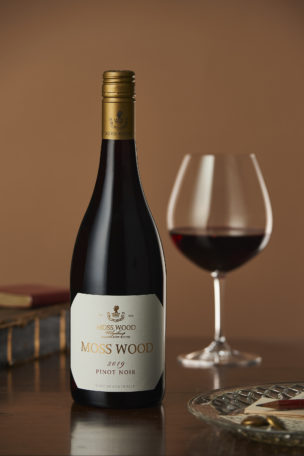
| Wine Facts | |
|---|---|
| Median Harvest Date | 13/03/2019 |
| Harvest Ripeness | 14.2°Be |
| Yield | 5.78t/ha |
| Weather Data | Growing Season Ave Temperature – 18.7⁰C Number of hours accrued between 18 and 28°C - 1035 Number of hours above 33°C - 6 |
| Days Elapsed between Flowering and Harvest | 105 days |
| Bottled | 02/11/2020 |
| Alcohol | 14% |
Wine Facts
-
Median Harvest Date
13/03/2019
-
Harvest Ripeness
14.2°Be
-
Yield
5.78t/ha
-
Weather Data
Growing Season Ave Temperature -18.7°C
Number of hours accrued between 18 and 28°C - 1035
Number of hours above 33°C - 6 -
Days Elapsed Between Flowering and Harvest
105 days
-
Bottled
02/11/2020
-
Alcohol
14%
Tasting Notes
Colour and condition
Medium ruby hue; bright condition.
Nose
Lifted, almost joyful aromas of strawberry jam, cherries and musk sticks, combined with poplar sap, cloves, mocha, earth and mushroom and light oak background.
Palate
The bright fruit note theme continues with strawberry-like red fruits, plus plums, cherries and rhubarb filling the full length of the palate. There is medium body, so the mouthfeel is generous and then the finish is a balanced combination of toasty oak and tannin.
Cellaring
Given the ripe stature and power of the vintage described above, this will be a long-lived Pinot Noir. Sure, it has a lovely and approachable generosity now but over the next 20 years it will build into a really complex wine. For those who have the cellar space and the patience, it will definitely be worth the wait.
Moss Wood 2021 Semillon
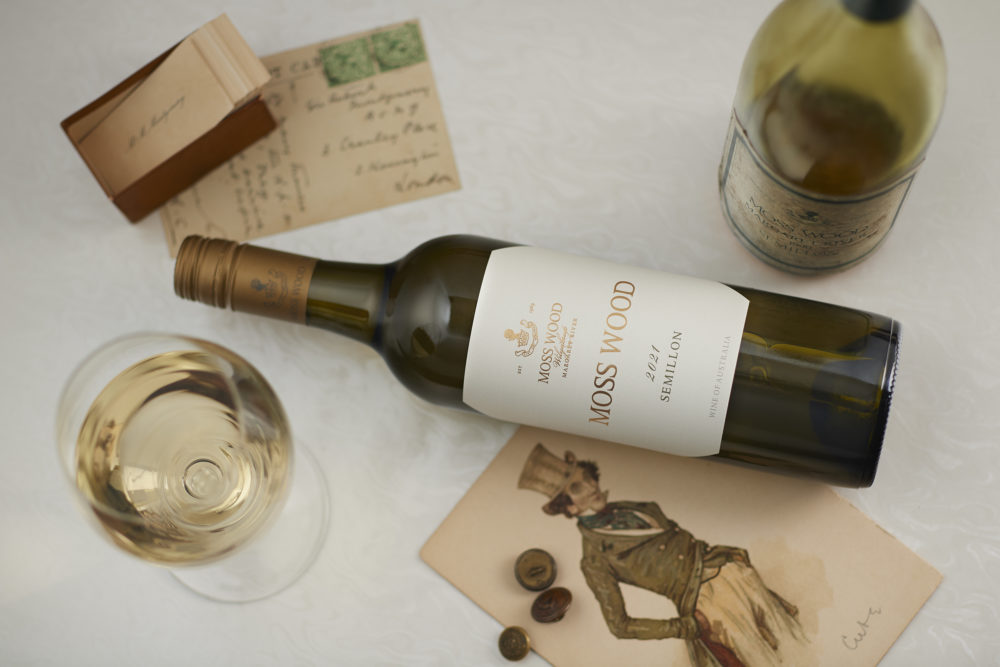
VINTAGE NOTES
The 2020/21 growing season got underway with budburst right on average and things looked promising from the start. Regular rain kept the soil moisture topped up and this continued until December. Although it brings with it complications, spring rainfall is very important for dry-farmed vineyards like Ribbon Vale and Moss Wood and gives the vines plenty of water to keep them going through the dry summer months.
All the signs were good but we got a bit edgy as the Semillon came into flowering in the first week of November. The rain was quite steady and for the month we received 78mm. With this came cool temperatures and between the two it eventually had quite an impact on our yields. At 5.79 t/ha, the crop was down 55%, as we picked fewer and much lighter bunches. We had been expecting some losses but got something of a shock at harvest when we realised how small the crop actually was.
Nevertheless, we were comfortable with how the season progressed. Temperatures were generally mild and ripening was accordingly slow but steady and we expected to start picking Semillon slightly earlier than average around 10th March. February arrived, and we thought we were in the home straight. Silly us! Mother Nature had one more challenge up her sleeve.
In the first week, Cyclone Seroja approached the Western Australian coast, eventually passing over the top of Kalbarri, about 800 kilometres north of Moss Wood. The winds were never a threat but the associated rain band delivered us 82mm rain. This caused us to hold our breathe for a day or so while we waited to see if there would be much splitting of the near-ripe and soft grapes and then whether we would be threatened by disease.
In the end we had little to fear. We had some splitting in Semillon but our spray program gave good control over botrytis, so disease wasn’t a problem. It’s interesting to speculate as to why there wasn’t more harm. We believe our soils play an important role because they’re free-draining, allowing the water to move away fairly quickly. Humidity drops accordingly and reduces the disease pressure.
A wine style consequence of the rain was not dissimilar to what happened in the Pinot Noir in 2019. A reasonable percentage of berries began to raisin, courtesy of the rain damage, concentrating the sugar. However, the majority of the berries, that also deliver the wine flavours, remained unripe and we had to wait for them to reach full flavour ripeness before we could pick. The resulting harvest ripeness of 14.9 Baume is well above our long-term average of 12.7 and means we’ve made a very generous 2021 Semillon indeed.
We’ve discussed this in our newsletter before the idea that history never repeats but it definitely rhymes. It’s been a long time since we had a similar vintage and we have to go back 32 years to 1988/89 to find the rhyming season.
After the rain delay, we took the Semillon off roughly 2 weeks later than average, on 22nd March.
PRODUCTION NOTES
The fruit was hand-picked and delivered to the winery where it was whole-bunch pressed and the juice was then settled in stainless steel tank for 48 hours. The clear juice was racked to stainless steel and seeded with multiple yeast strains for primary fermentation. This was controlled to a temperature of 18°C and once the wine reached dryness it was racked and prepared for bottling as soon as possible.
Fining trials were carried out to assess tannin balance but none of the treatments improved things and so the wine was treated only with bentonite for protein stability. It was then sterile filtered and bottled on 9th July, 2021.
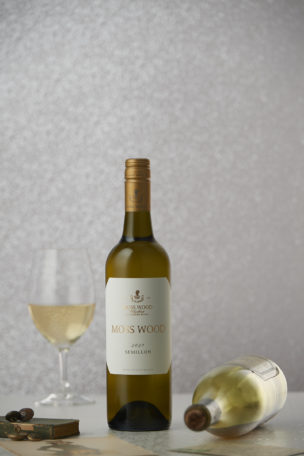
| Wine Facts | |
|---|---|
| Median Harvest Date | 22/03/2021 |
| Harvest Ripeness | 14.9°Be |
| Yield | 5.79t/ha |
| Weather Data | Growing Season Ave Temperature - 18.9°C Number of hours accrued between 18 and 28°C - 1095 Number of hours above 33°C- 21 |
| Days Elapsed between Flowering and Harvest | 124 days |
| Bottled | 09/07/2021 |
| Alcohol | 14.5% |
Wine Facts
-
Median Harvest Date
22/03/2021
-
Harvest Ripeness
14.9°Be
-
Yield
5.79t/ha
-
Weather Data
Growing Season Ave Temperature - 18.9°C
Number of hours accrued between 18 and 28°C - 1095
Number of hours above 33°C - 21 -
Days Elapsed Between Flowering and Harvest
124 days
-
Bottled
09/07/2021
-
Alcohol
14.5%
Tasting Notes
Colour and condition
Medium straw hue, with green tints; bright condition.
Nose
A classic Moss Wood Semillon. The fruit aroma of leaf and ripe figs is lifted by citrus and confectionery notes of lemon sherbet, plus pear, camomile tea, lanolin, wax, preserved lemon and even mushroom.
Palate
The wine’s initial impression is quite unctuous – concentrated fig, apricot and orange rind and preserved lemon flavours, supported by a full body. Underneath, the structure is firm but the acidity and tannin are well balanced by the flavour depth. The finish is clean, with no bitterness.
Cellaring
In the short term, the youthful fruit flavours should remain a strong part of the wine for at least the next 5 years. Around years 7 – 10, Semillon can experience something of an adolescence where some of the initial aromas have aged away but are not yet replaced by the developing bottle bouquet. However, from 10 years on the wine should hit its straps and reach full maturity around 25 years old.
Order
OUR WINES:
Contact
MOSS WOOD:
Location: 926 Metricup Road, Wilyabrup WA
Postal: PO Box 225, Cowaramup WA 6284
Phone: +61 8 9755 6266
Fax: +61 8 9755 6303
Follow us on
SOCIAL MEDIA:


